July 22, 2018
Martha O'Kennon
A mixed bag weatherwise. Days mostly hot, but a few patches of rain, especially at night. I hope to be able to keep the asters wet enough so that they do better than last year. The goldenrod is trying to bloom soon. It got awfully tall, and it is trying to bloom. The trick is going to be keeping the ground wet enough. There are actually signs of pre-fall. The Solomon's Seal berries are fat but still not red. My hosta with the humongous leaves has some prodigious flower buds now. And the magenta Monarda is still sitting waiting to be planted for real.

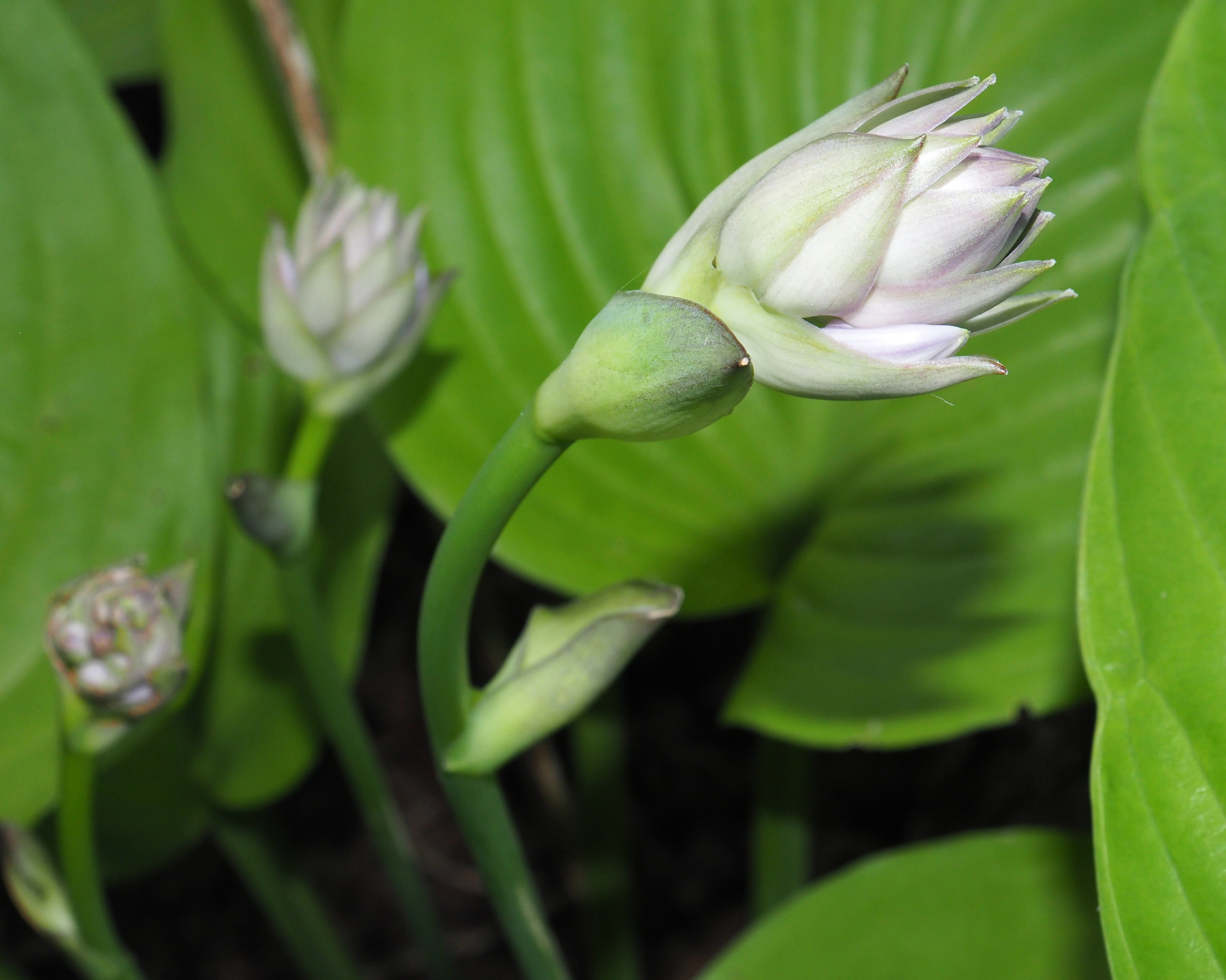
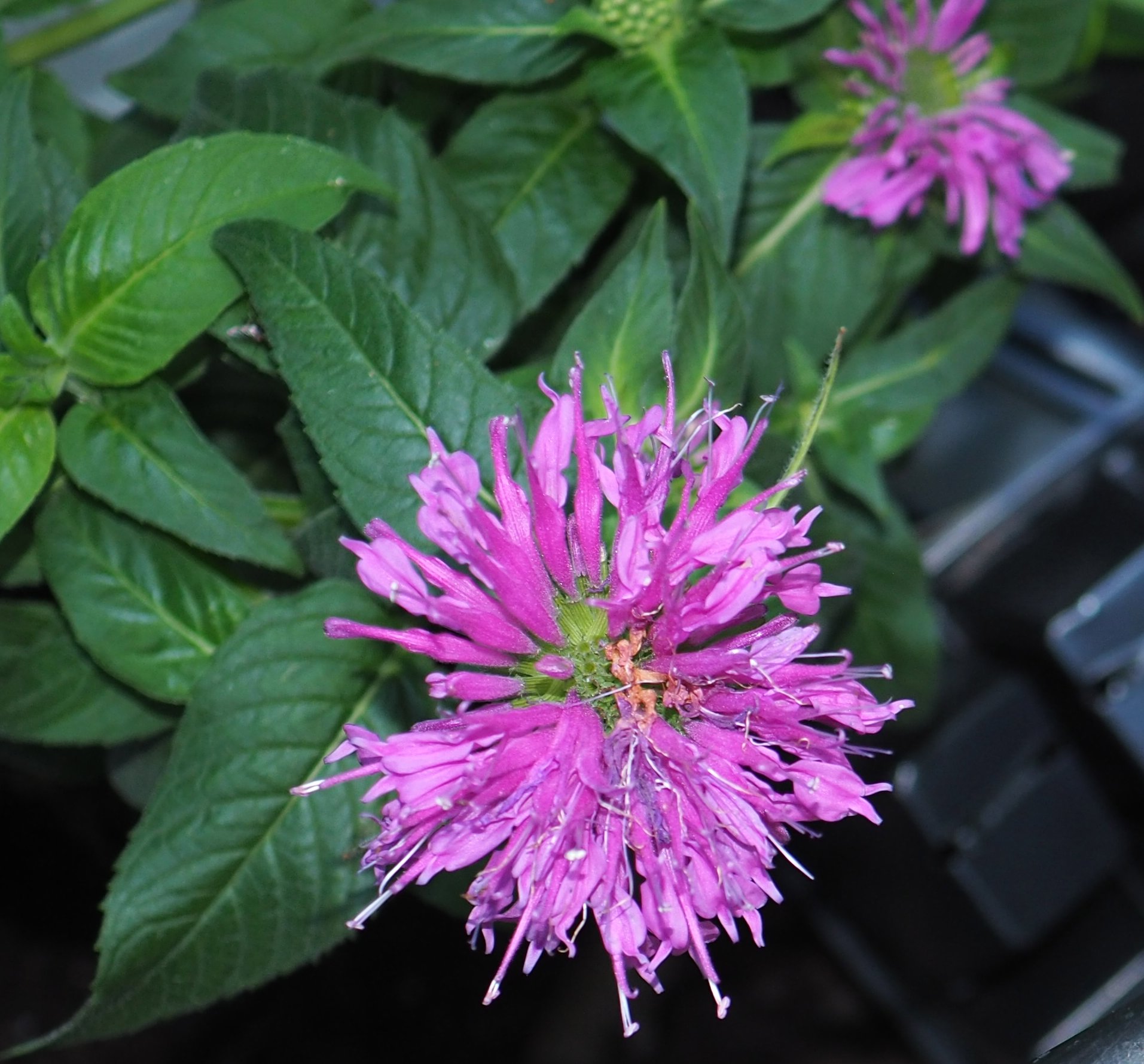
Remember that there is information in the name of the file for each image. You can see it by mousing over the image - look at the lower left of the screen. Or you can click on the image to get to the (usually) larger image. Then the info is displayed in the address line above. Sometimes the second click will actually display a different view of the original image.
What a lot of new bugs we seem to have. Is this orange ant an ant or is it an ant mimic? It seems to have the same kind of decoration on the "hips" as the one we saw last week. Its head doesn't seem the same as the head of the second "ant". I believe numbers 2 and 3 are both Carpenter or Sugar Ants, genus Camponotus.
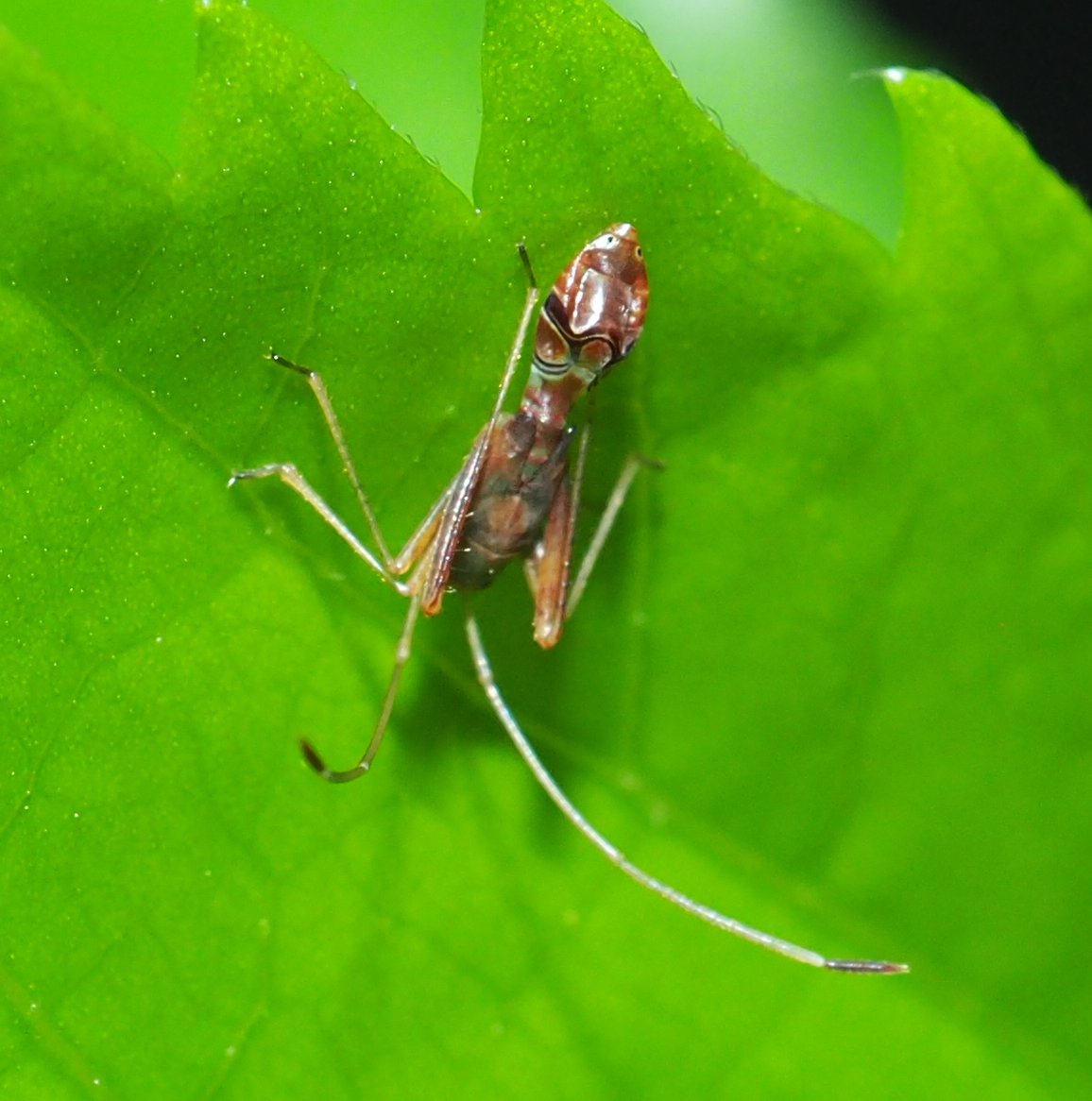
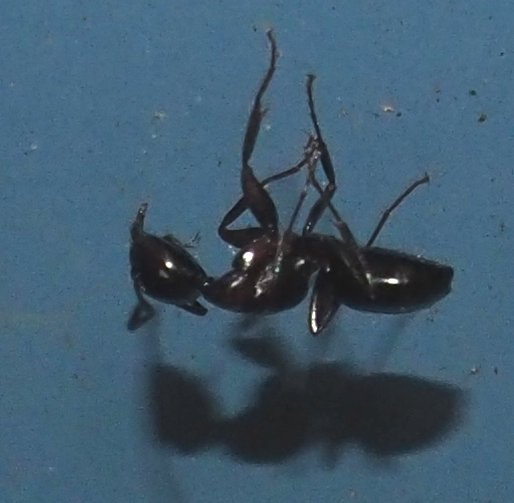
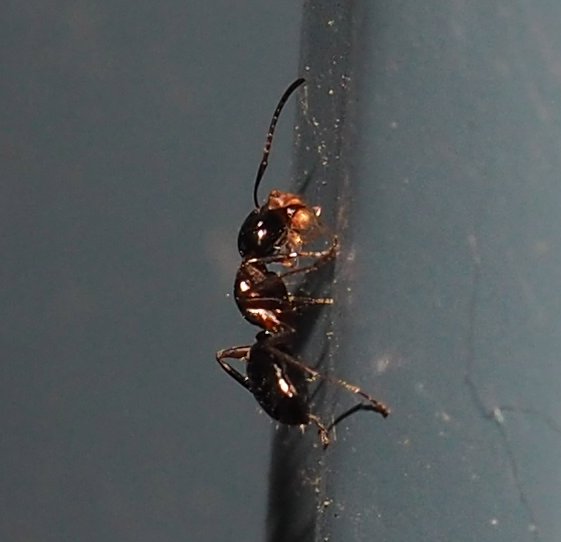
More barklice! They have all appeared once in a while. But here we have our scaly-winged friend, Echmepteryx Hageni; Second, Metylophorus novaescotiae; and third, our hairy-winged Polypsocus corruptus.
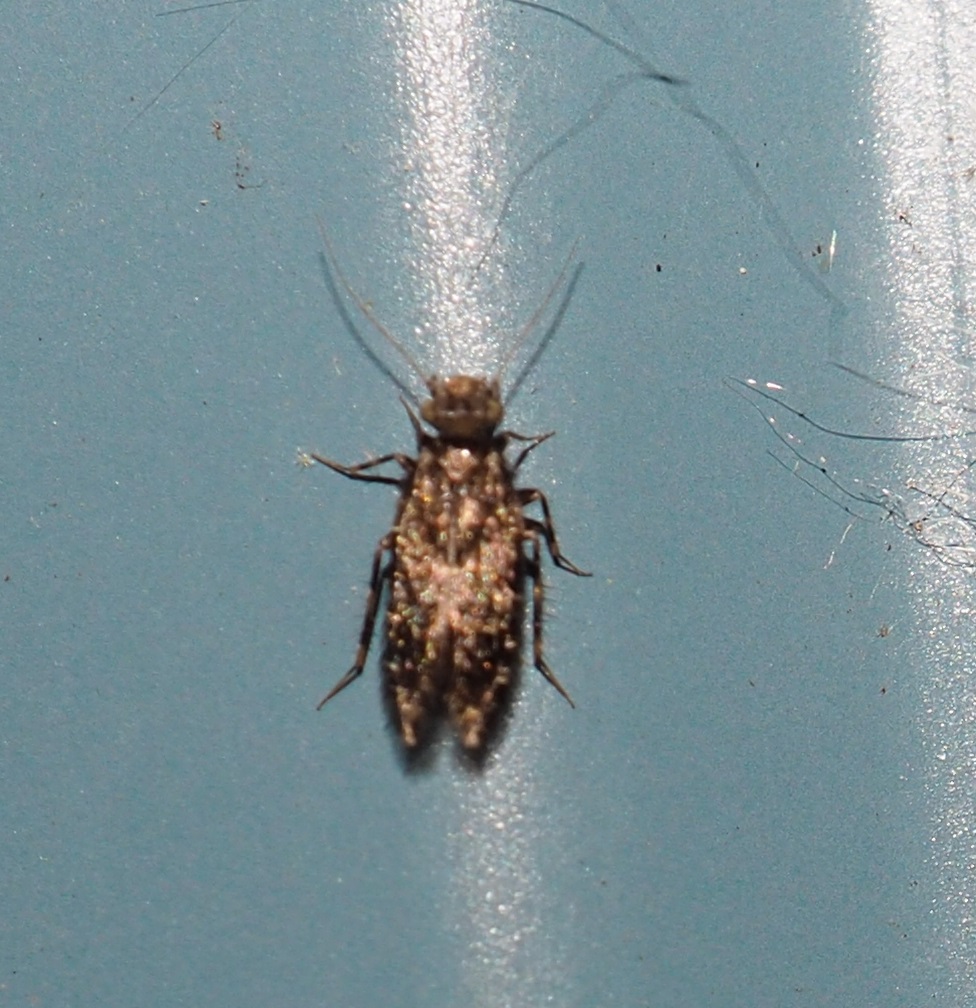
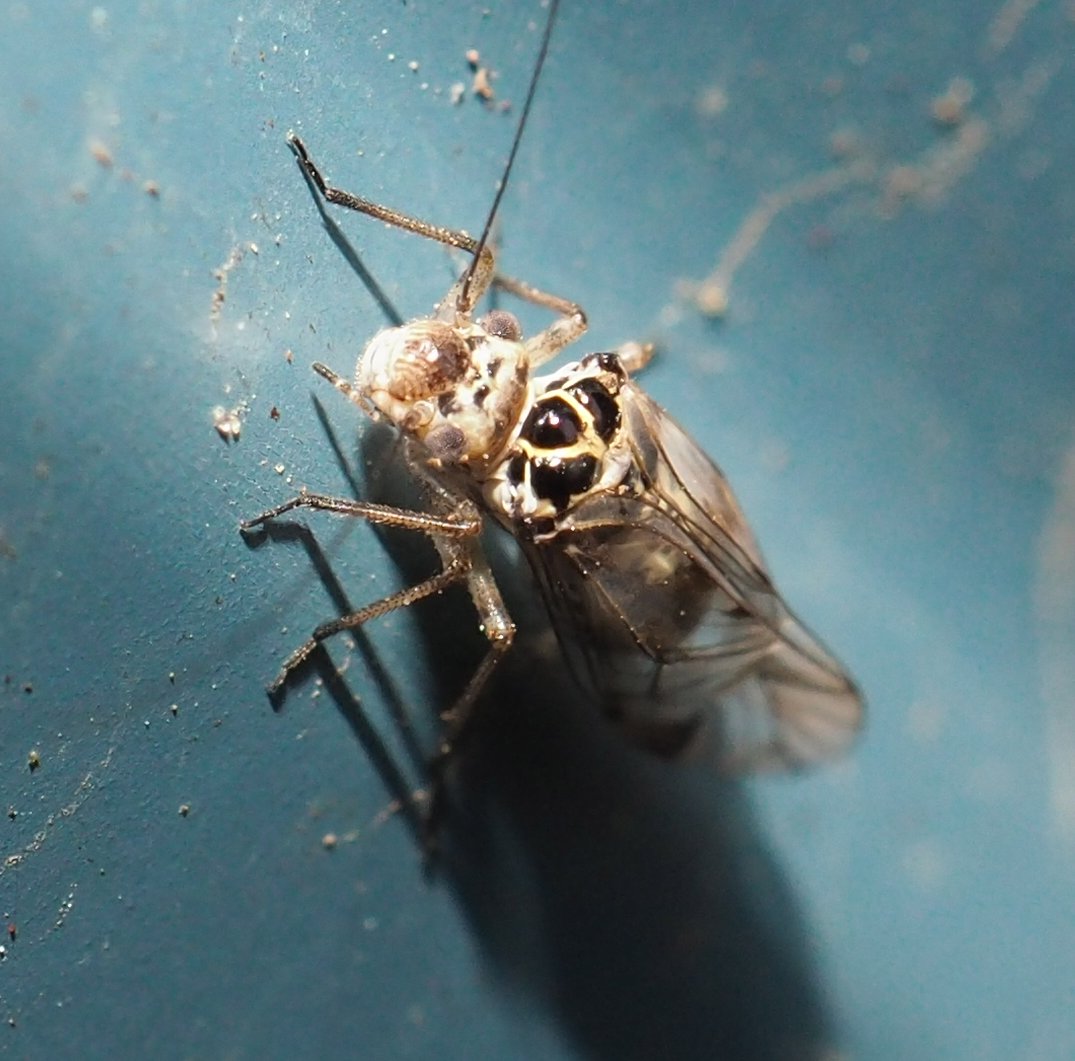
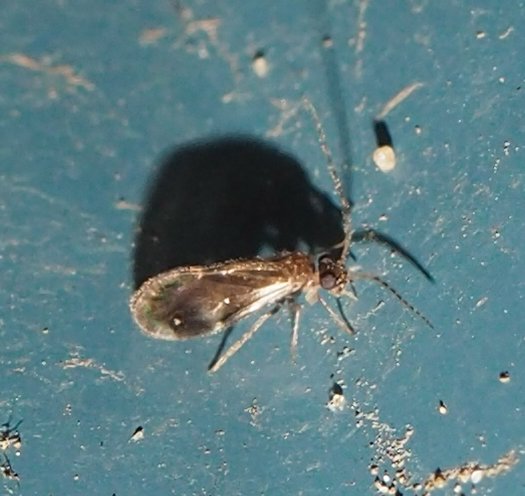
First in this row is a Striped Flea Beetle, Phyllotreta zimmermanni, the only Beetle I shot this week except for a Japanese Beetle. Here are a mother bird and her baby. She was fast and got out of my line of sight (so I only have this one streaky picture), while her baby held absolutely still until I got out of there. Anyone able to ID these birdies? Speaking of birds, Momma Robin is still sitting on nest #3 or #4. I'm not going to disturb her any more by taking a picture.
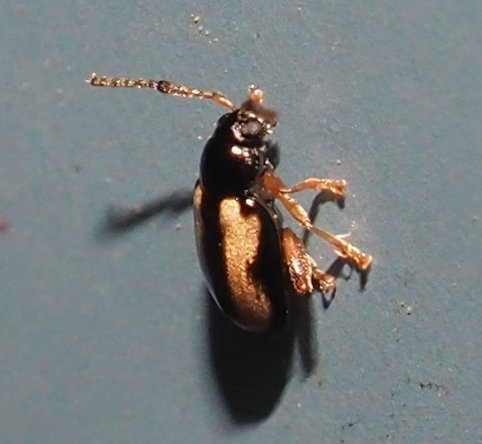
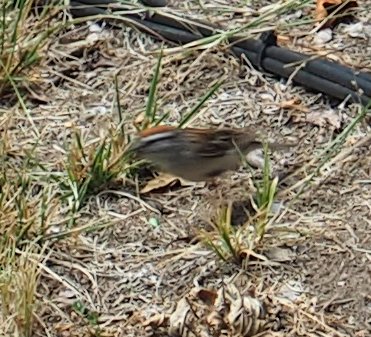
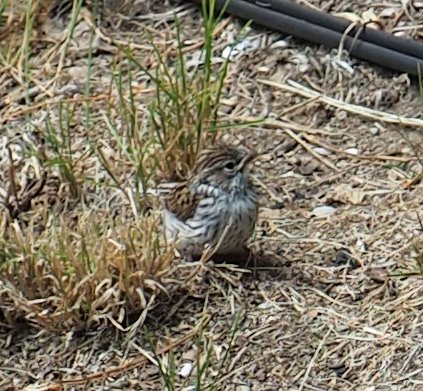
This little Assassin Bug, since it developed in the Redbud tree (I think, only a few feet away), I'd decided it might be Zelus renardii, but then on the observation map in Bugguide.net, it turns out that Z. renardii is not found north of the midline U.S. So it may be Zelus luridus, our usual Zelus around here, or maybe another kind of Zelus or even a different genus. It's Z. luridus - the red eyes give it away. The only other Zelus Bug in Michigan is Z. Tetracanthus, which has grey/brown eyes.) I've surely never seen the red anal ring. The second one I called "black bug", but now it looks as if the big wings are actually brown. It is in the group Drymini and maybe even be Drymus unus. #3 I called BMSB (for you-know-who), but now I see that its antennae do not have the white sections. So I had to do a little more sleuthing, and found that this is actually the Spined Soldier Bug (look at the spiny shoulders!), a close relative of the Stink Bugs, but NOT, and definitely NOT BMSB.
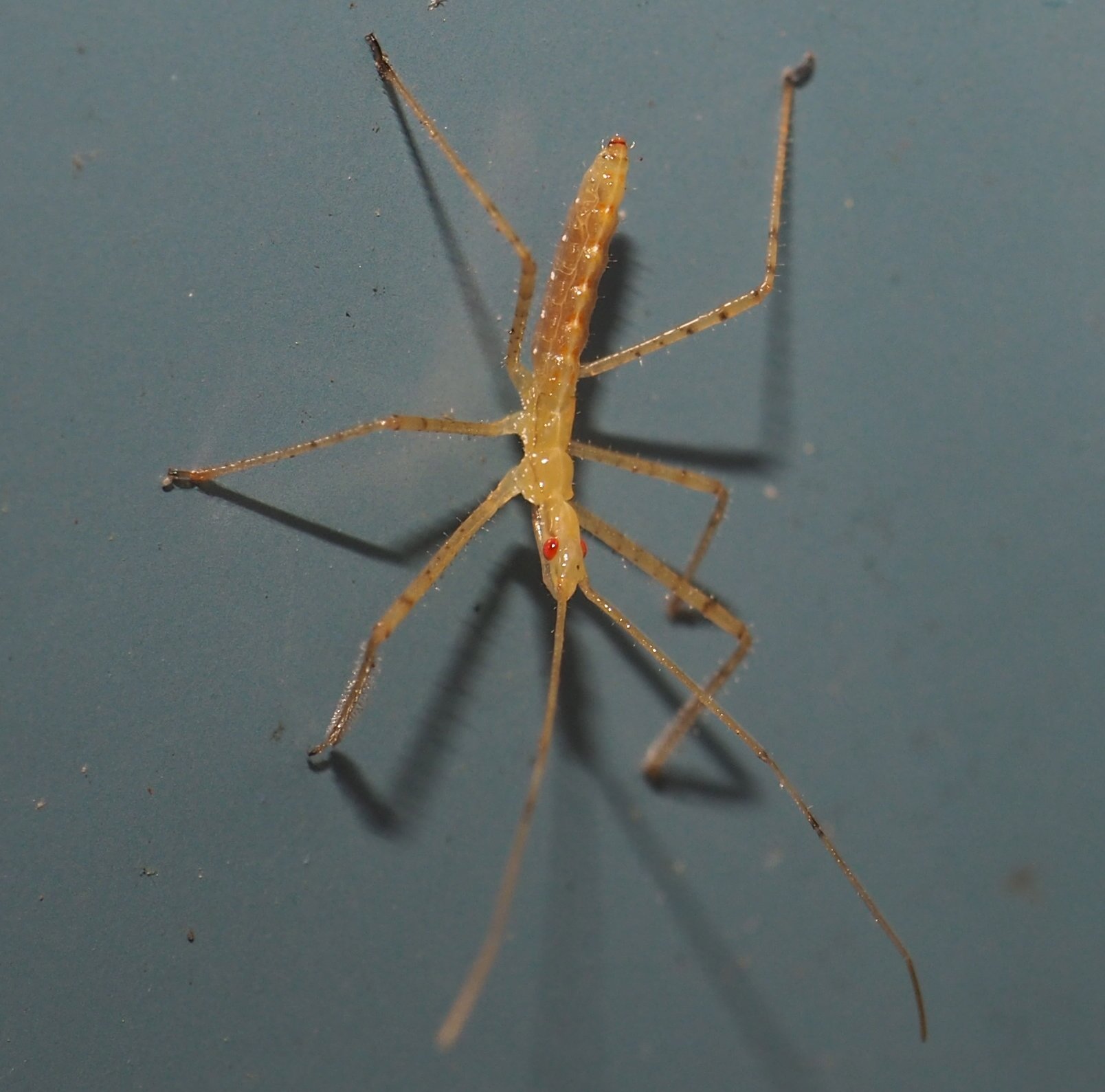
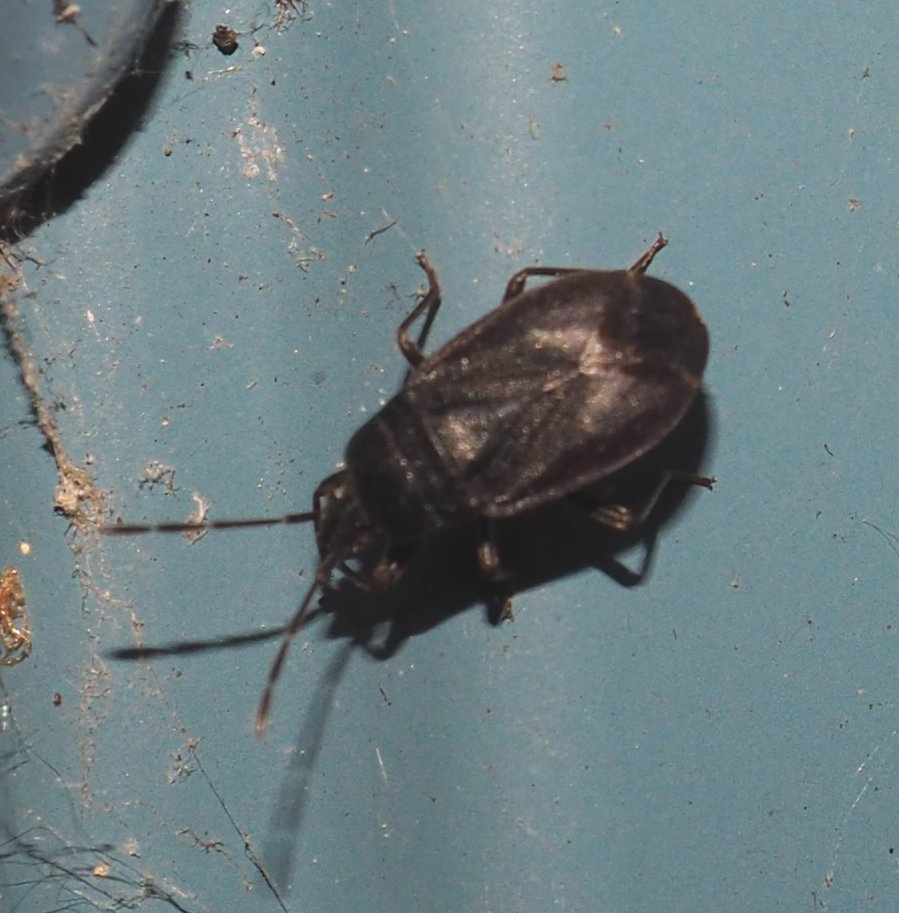
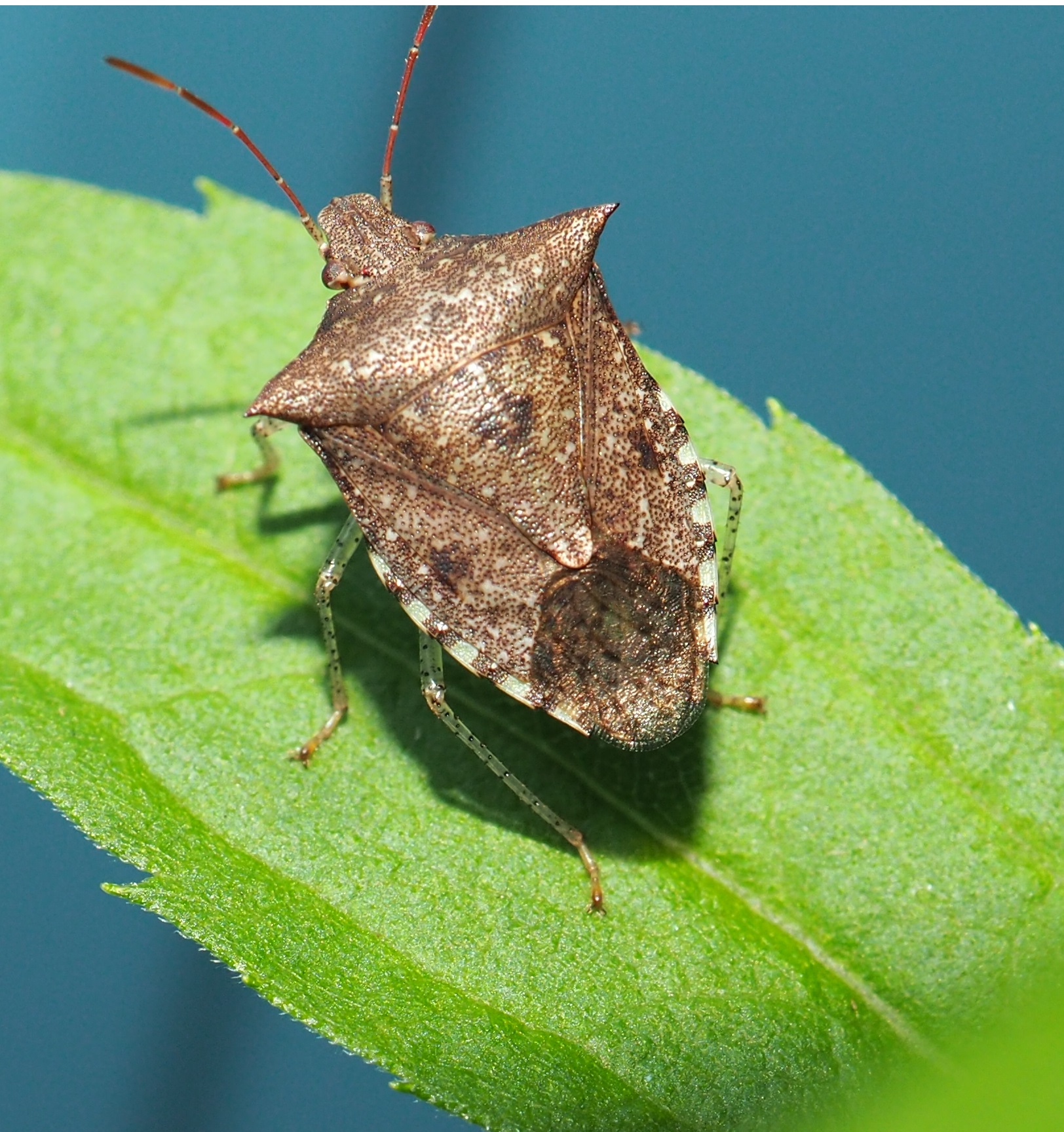
The first of these bugs is a Meadow Spittle Bug. The next one I am guessing as also a Spittle Bug, but no spots to help me out. Bug #3 may or may not be a distinct Spittle Bug. Note (February 22, 2021): The Meadow Spittle Bug has many manifestations, and I think all three of these are Meadow Spittle Bugs.
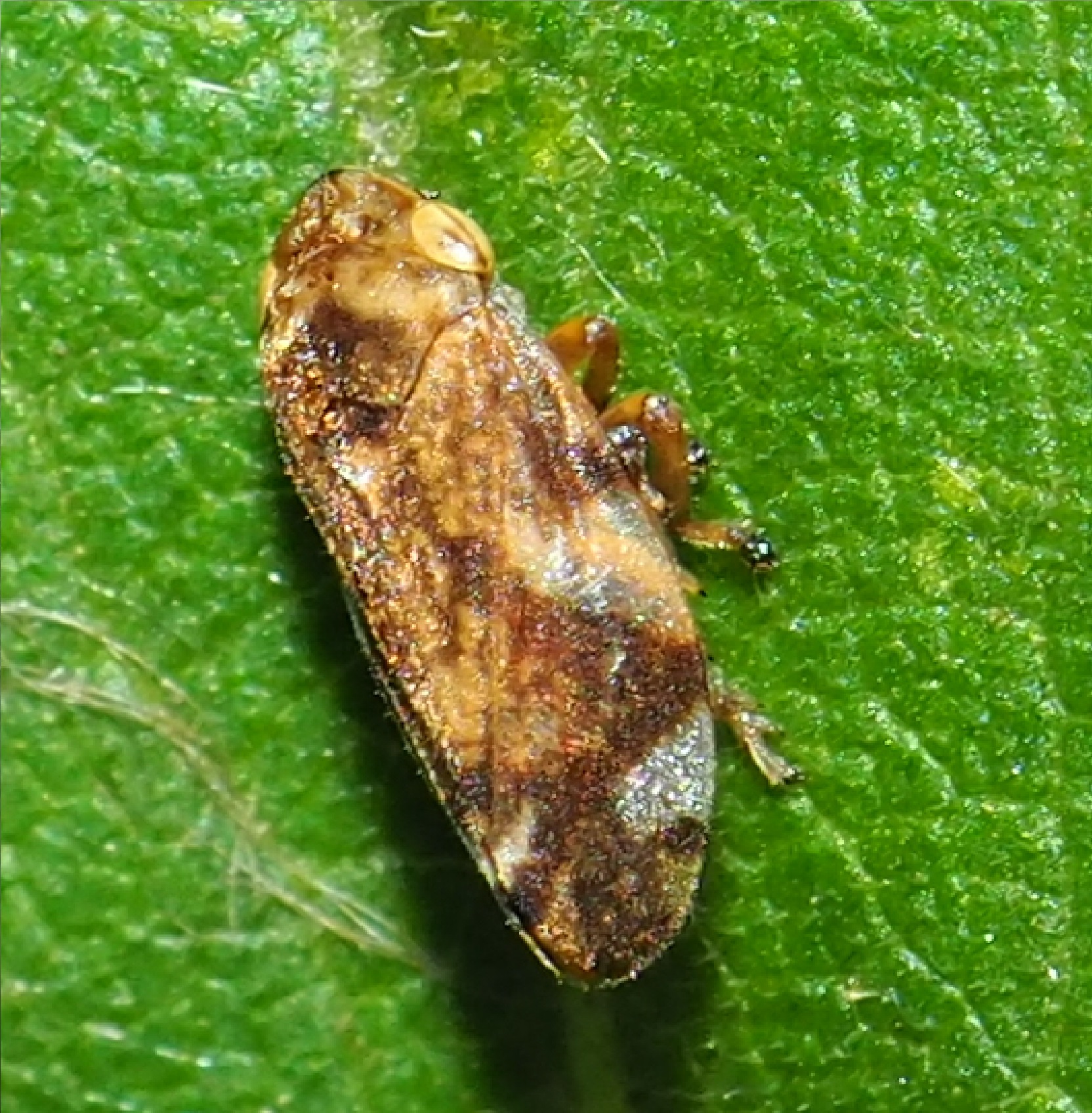
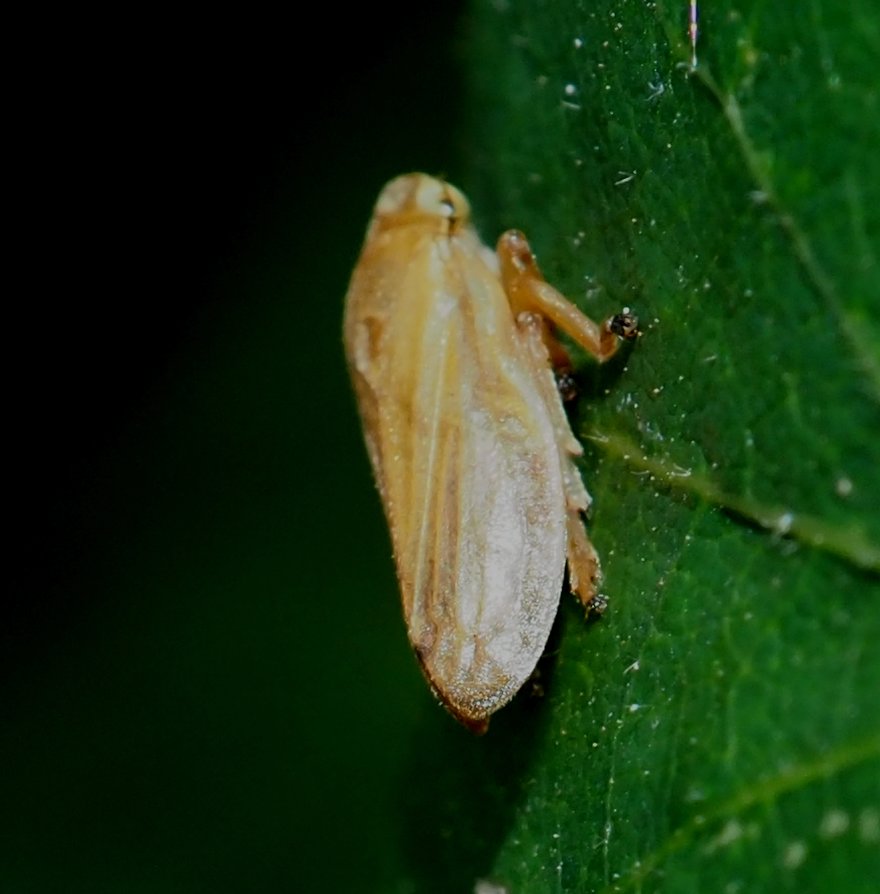
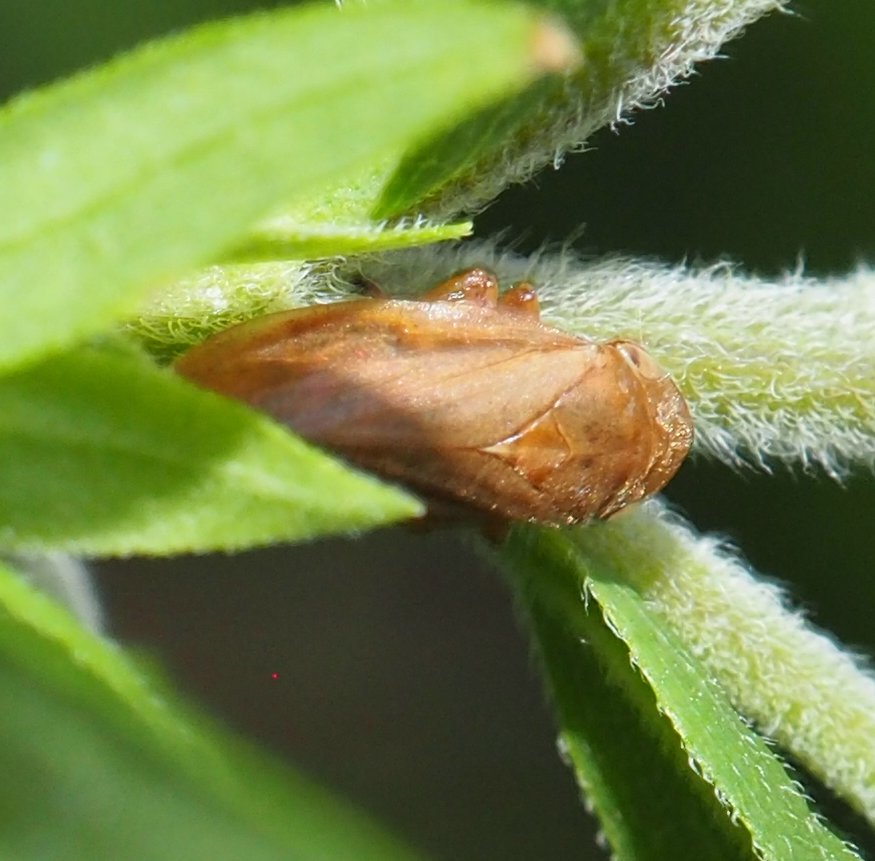
Now for the Piece of Resistance. This week had my largest group of sightings of Leafhoppers. This first one had the most green if not the worst resolution. The second had the nicest aqua and red markings. Both of these Green and Red Leafhoppers are the Red-banded Leafhoppers. Third is a Japanese Maple Leafhopper (I just adore the background colors it picked for this shot), while Fourth is a Japanese Leafhopper. These last occur with various mosaics in the same pattern.
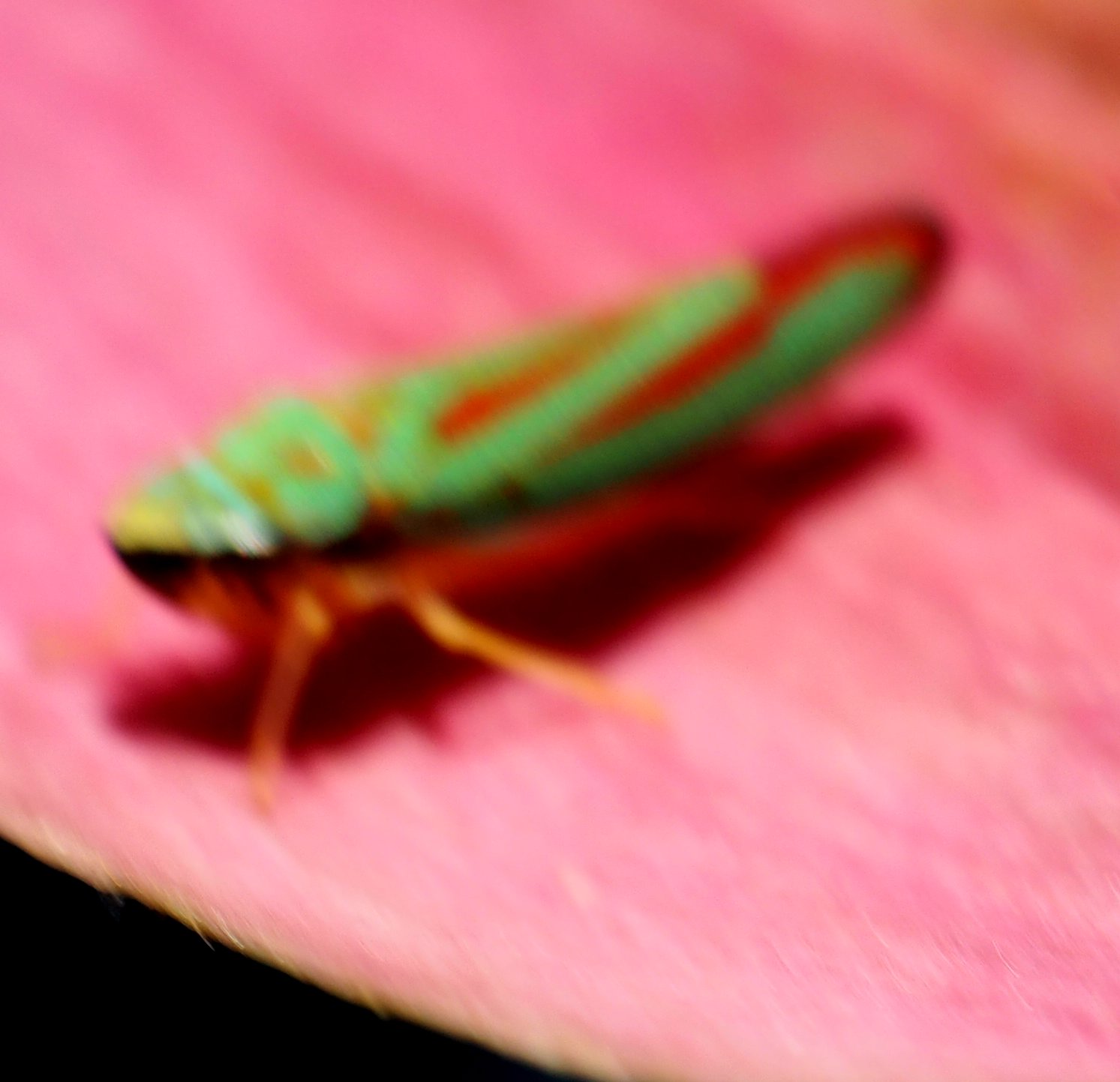
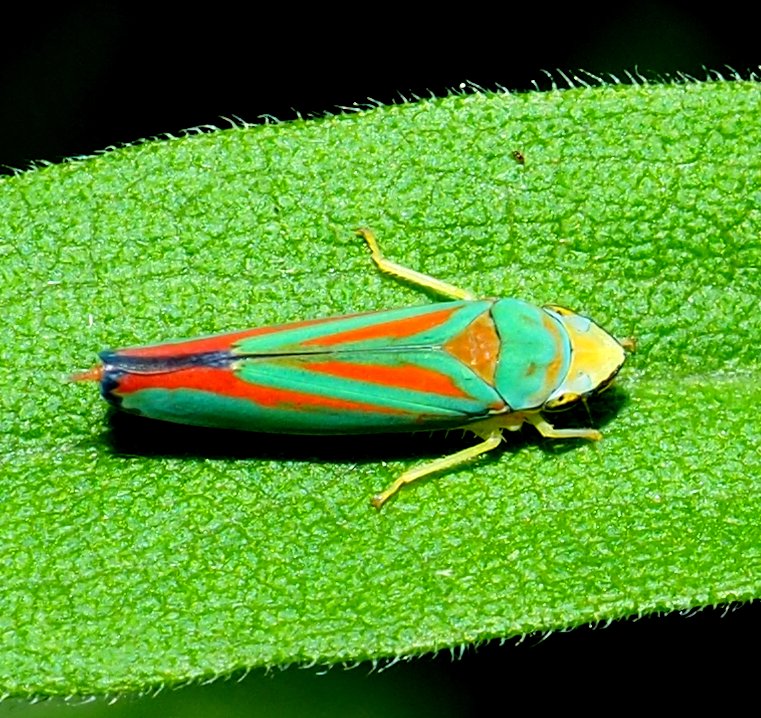
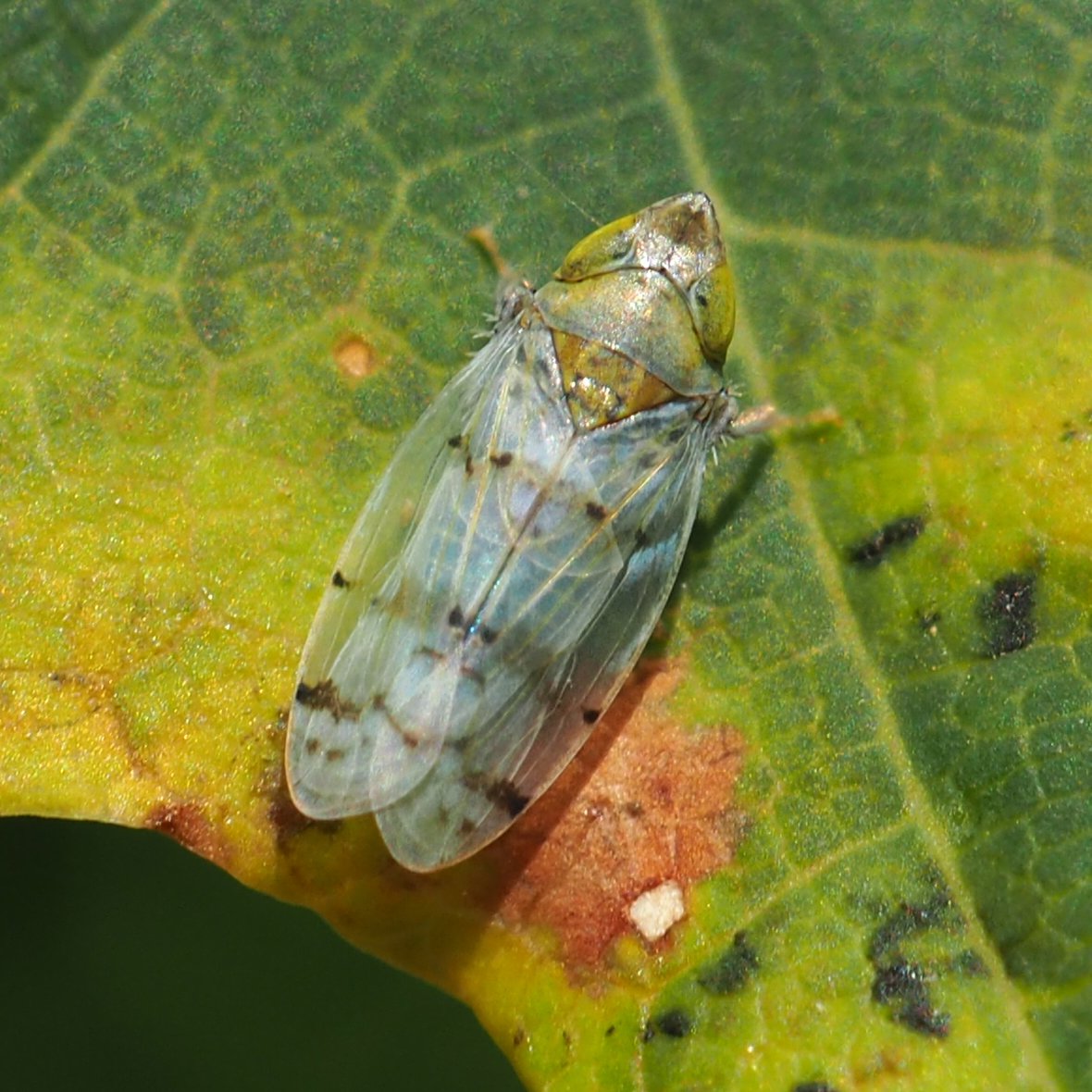
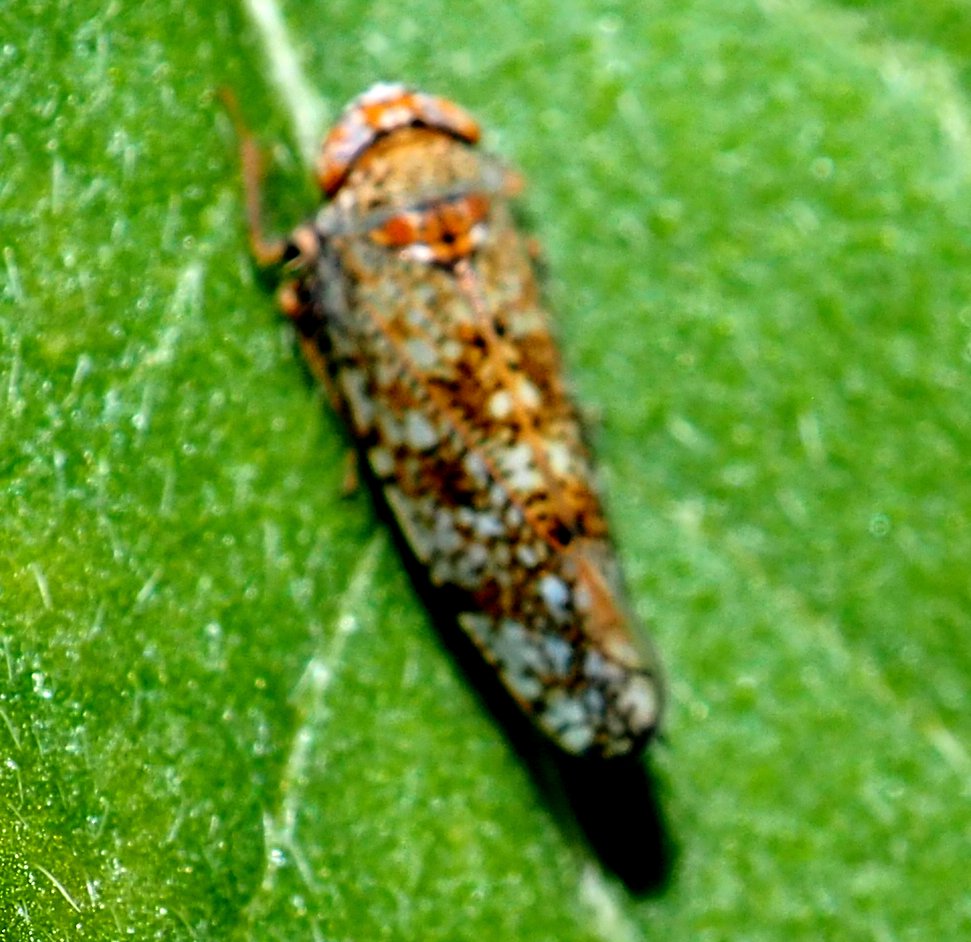
I still love the shades of yellow and green in this first Leafhopper, and wonder about parallel evolution in the second Sharpshooter qua Alligator. The next reddish leafhopper is in the genus Osbornellus.

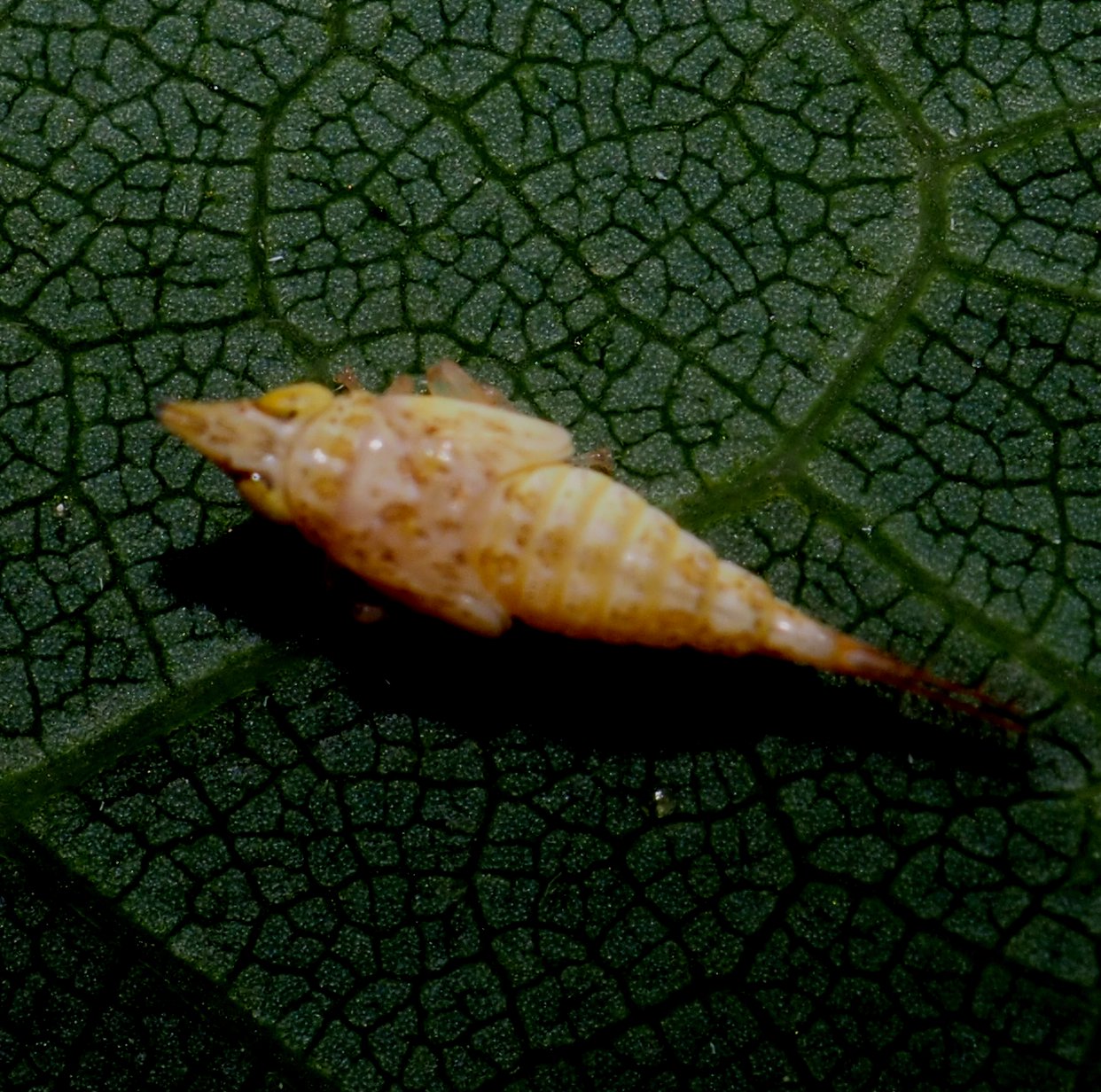
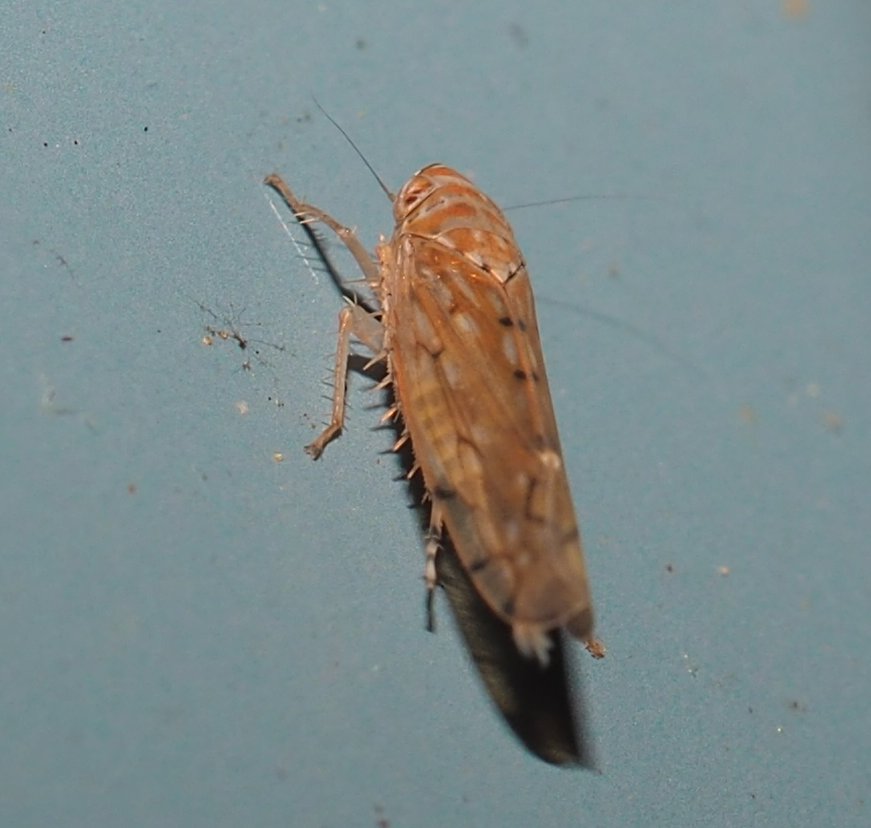
First here reminds me of some of the old red and white leafhoppers - Erythroneura genus. This first one looks like a yellow- colored copy of E. ardens. But here the red markings are light light yellow. The second is one I've seen several of, including a couple of weeks ago one with the name Prescottia lobata attached to it. Drat! The third of these seems to have a parasitic mite on its right side. I believe it is Scaphoideus obtusus.

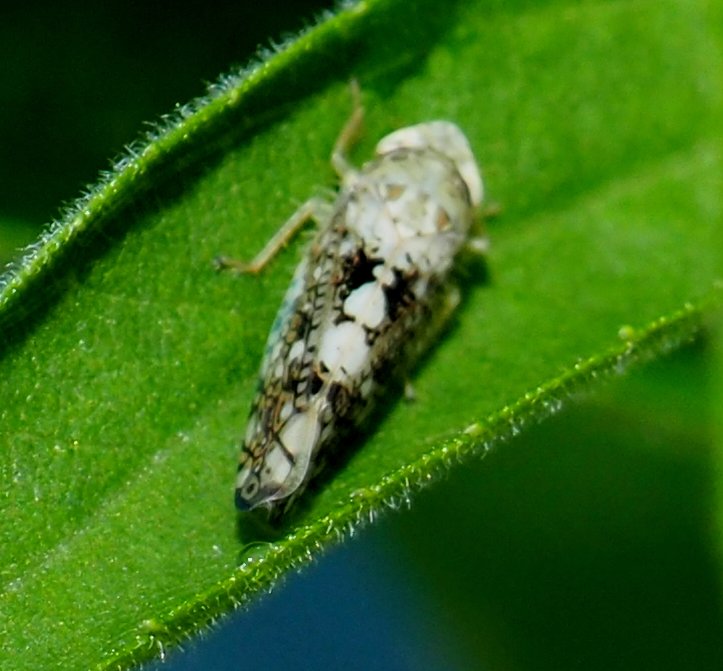
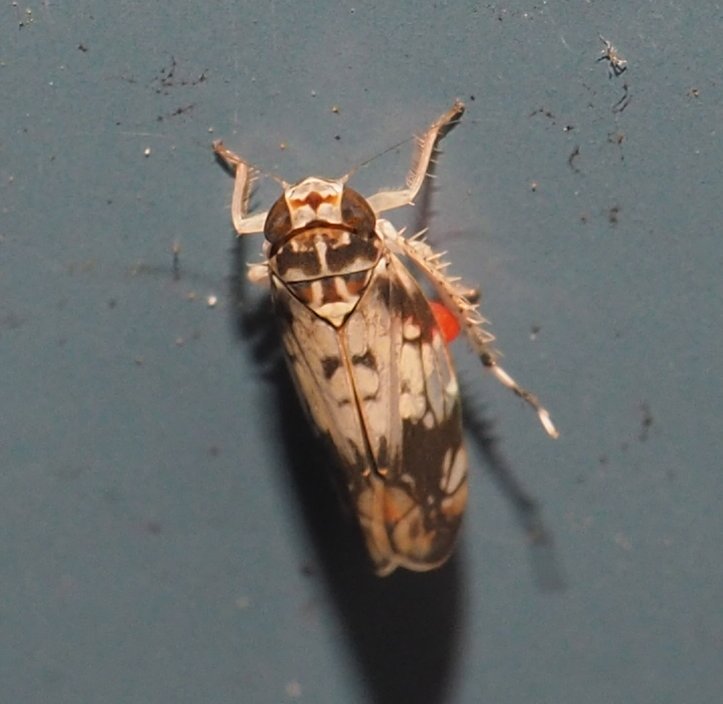
There is a certain leafhopper who is not in adult stage yet, but whose nymphs are so "cute" (I hope they didn't hear that) and come in a large number of colors. Most of them look sort of lordotic, with their heads and tails held high. If you can get one on a nice still leaf (Really? Where?) you might catch some captivating postures. This is the nymph of Jikradia olitoria, the most recent name of the former Coelidia olitoria. Number Two here is the untouched image of Number One. In the past couple of weeks, we've seen some other color patterns. Third is one of my favorites from 2016.

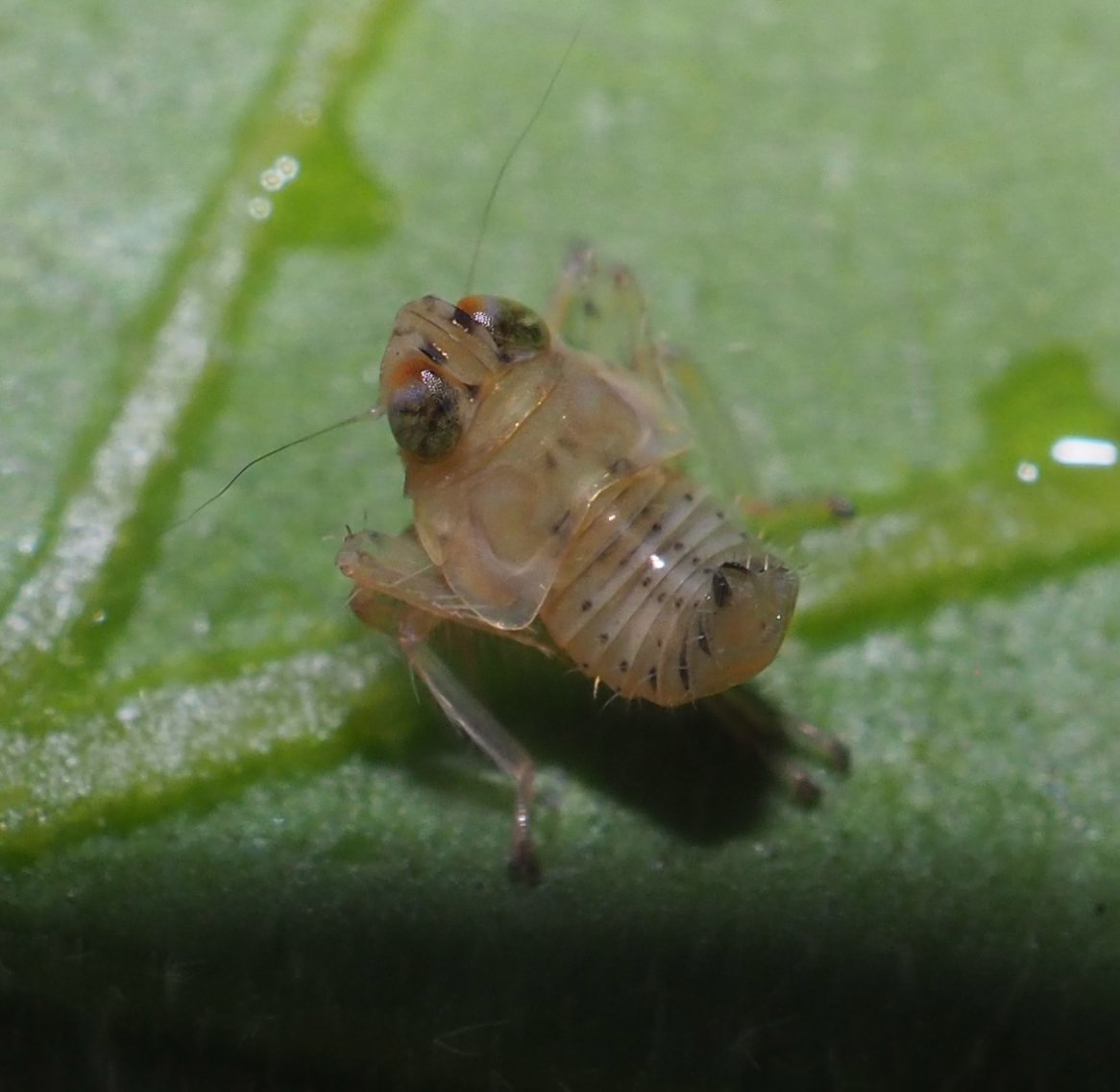
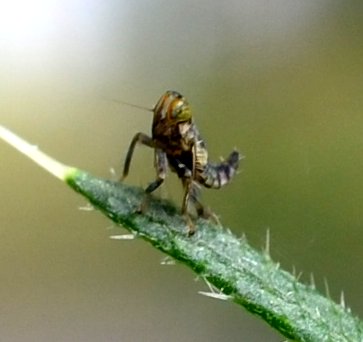
Can you appreciate the thrill of seeing so very many leafhoppers, each with its own little color and design patterns? When I first started my photo-collection of bugs etc, I had no idea there were so many thousands of species (I guess there are, it feels like it!) and that I had the right to look for them and make roller-coaster noises as I cropped some of them!
Anyway, that brings us up hard against another huge order of critters, the FLIES! Even if they didn't come in so many styles and have such stories to tell about their environment, so many of them have fantastic colors and textures that it is the leafhoppers all over! Too bad people have a bad opinion of flies (I don't appreciate the blood-thirsty ones like black flies, mosquitoes, horse flies, etc) but there are so many more UN-annoying of them that I almost don't think about the ones we just mentioned. Lucky us, so many of this week's flies are pretty and some of them eat other bugs or detritus left in our paths.
Let's go! (Of course, between the B's and F's there are a lot of other things that we might be lucky enough to see: dragon-and-damselflies, caterpillars, etc...(Just not many this week...)
The bot flies are some of the ones that people wish would disappear from the face of the earth. But I think we would quickly start to go into the doldrums without the shining colors of the most common flies. Look at this green bottle - or bot.Different ones of a set of similar flies are totally hated. Or this green bottle. Or this little long-legged creature - he just lives to be beautiful and eat other tiny insects.
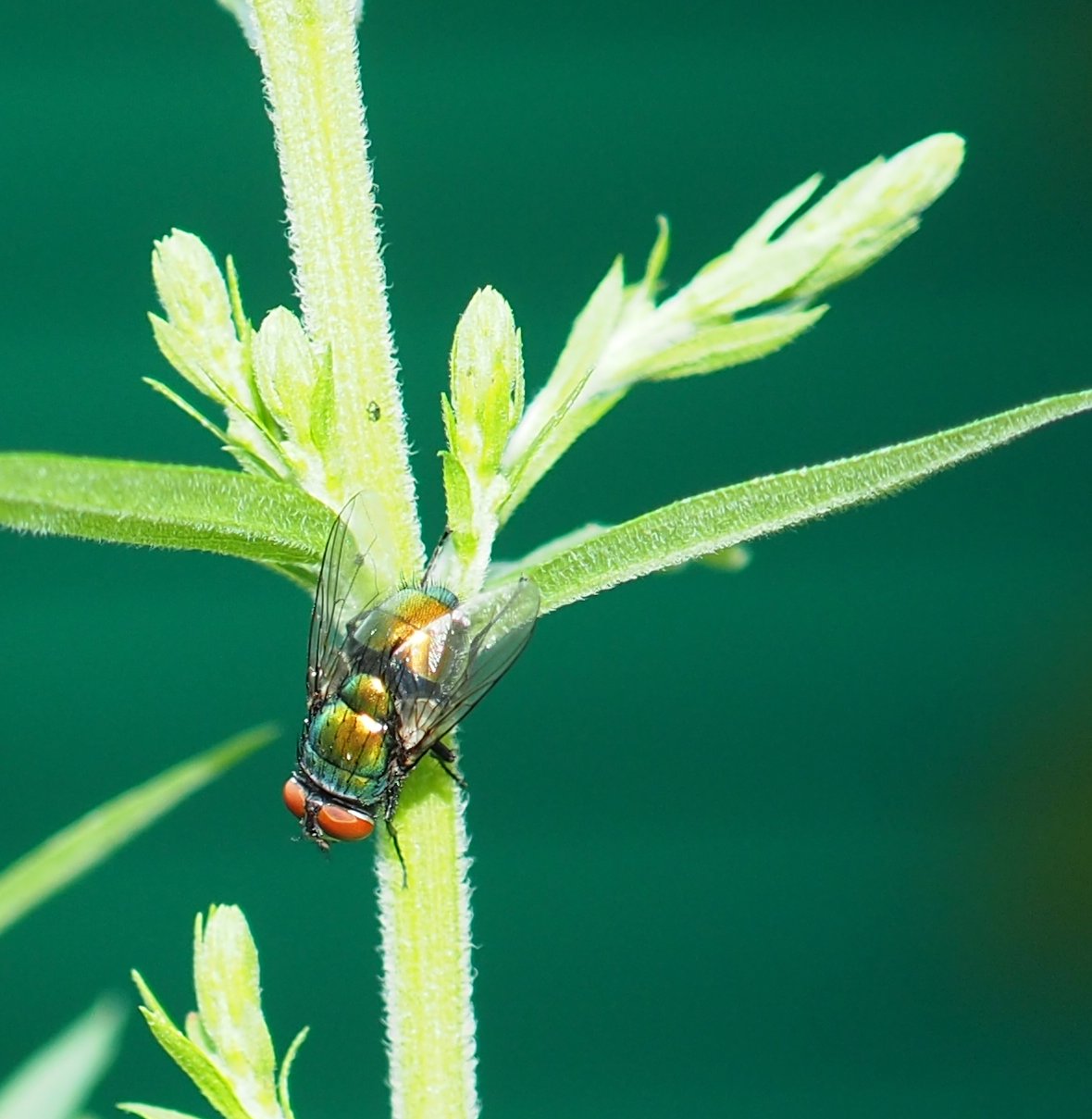

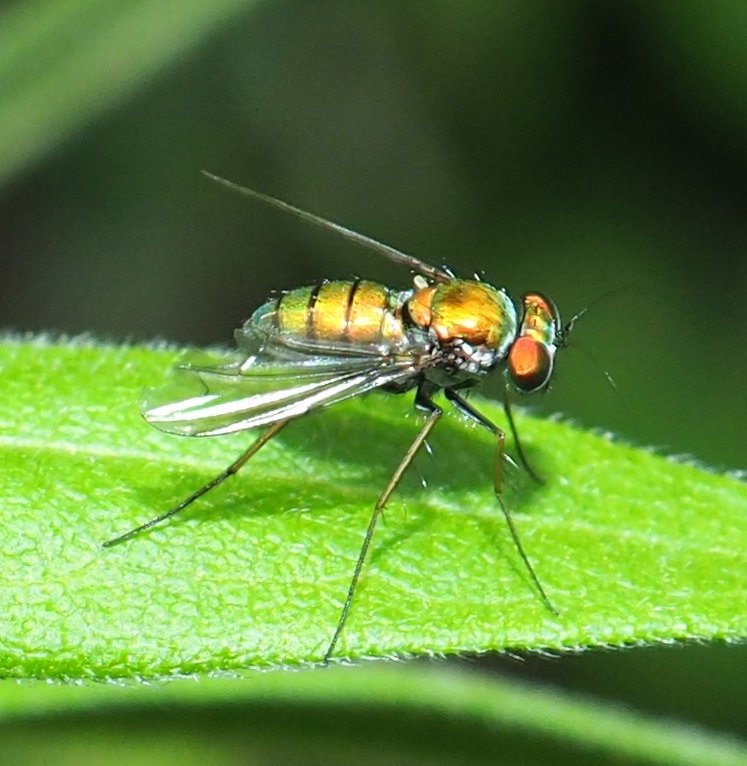
How about this fellow with the gorgeous red eyes and lightly decorated wings? Someday I'm going to go about trying to identify these people. And this blue-bodied beauty with yellow wings and bright red eyes - it is Minettia lupulina. I wonder how all these different species seem to choose red for their eye color. Finally a mosquito with bright green eyes. I don't think this one has ever bitten me.
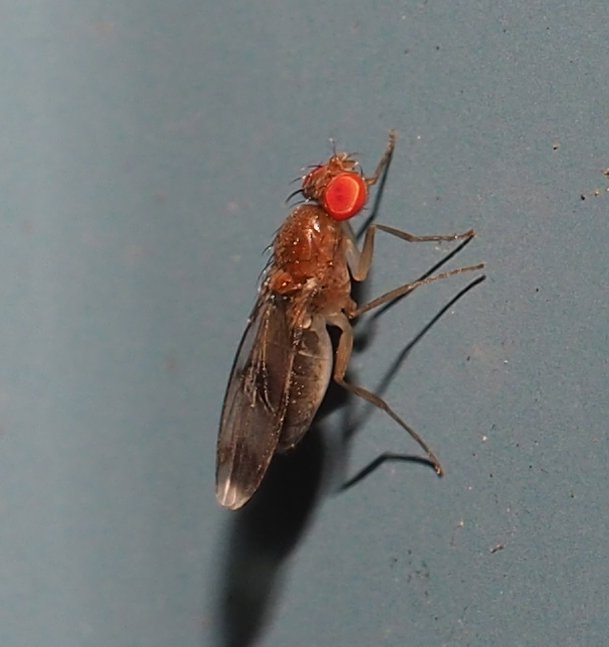
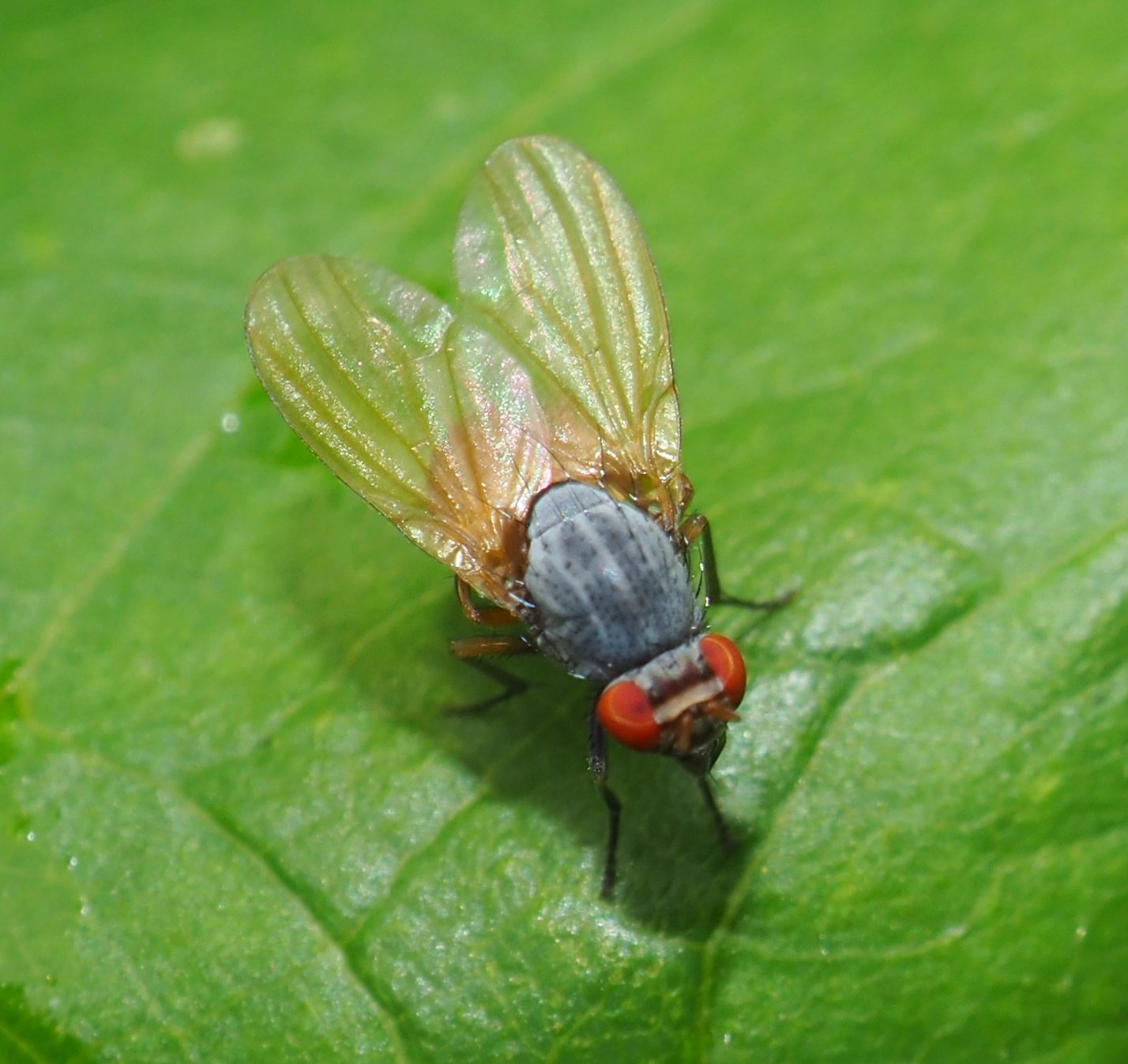

Here is another of those Moth Flies -- Flies who mimic Moths. Then we have this lovely fly whose true beauty will become apparent as soon as we look at him head-on. His eyes are red AND blue. What a treat! A year or two ago I saw one called Rhagoletis suavis - the Walnut-husk Maggot Fly. But the black pattern here is different and all the pictures show the bicolor eyes.
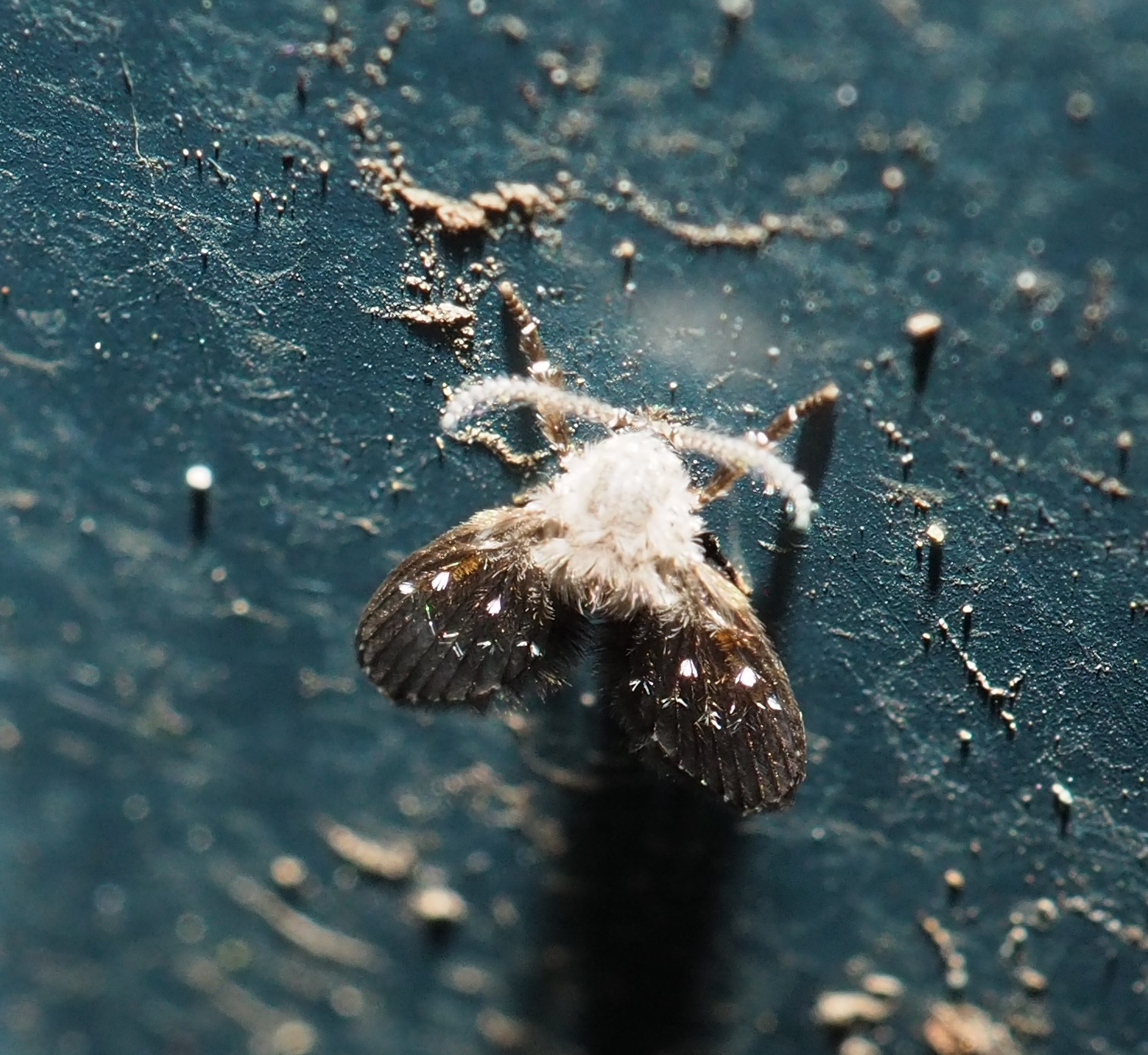
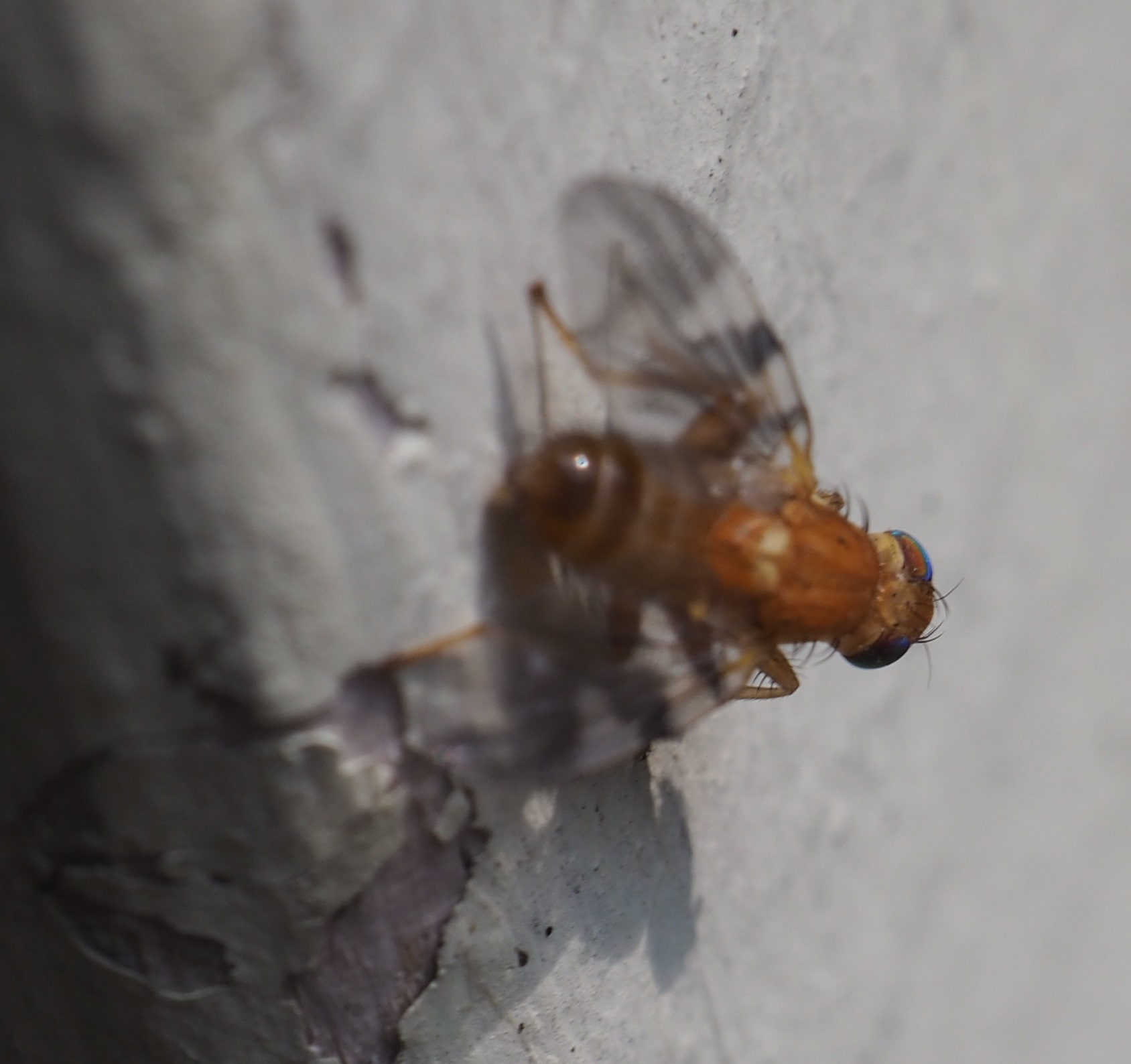
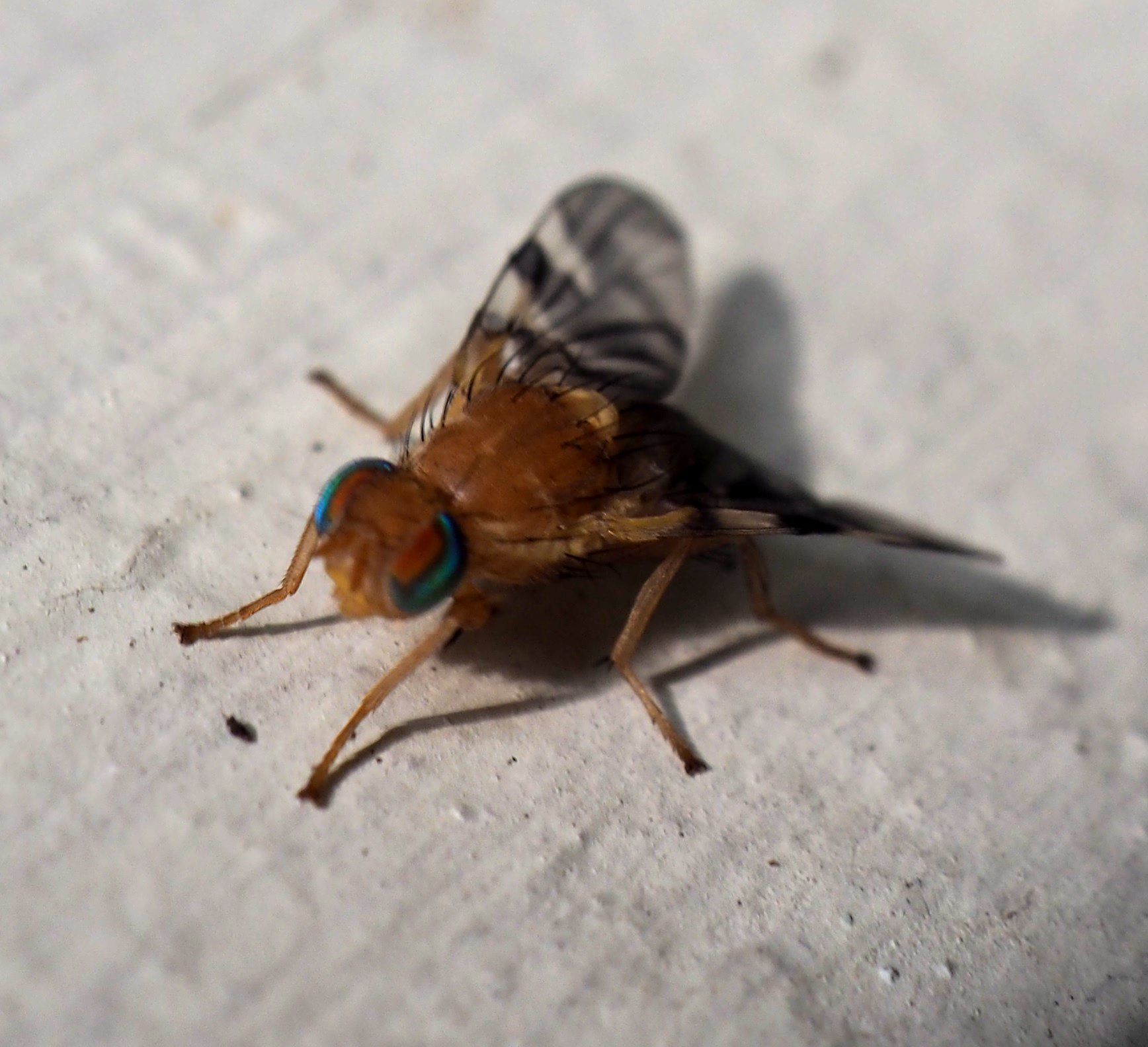
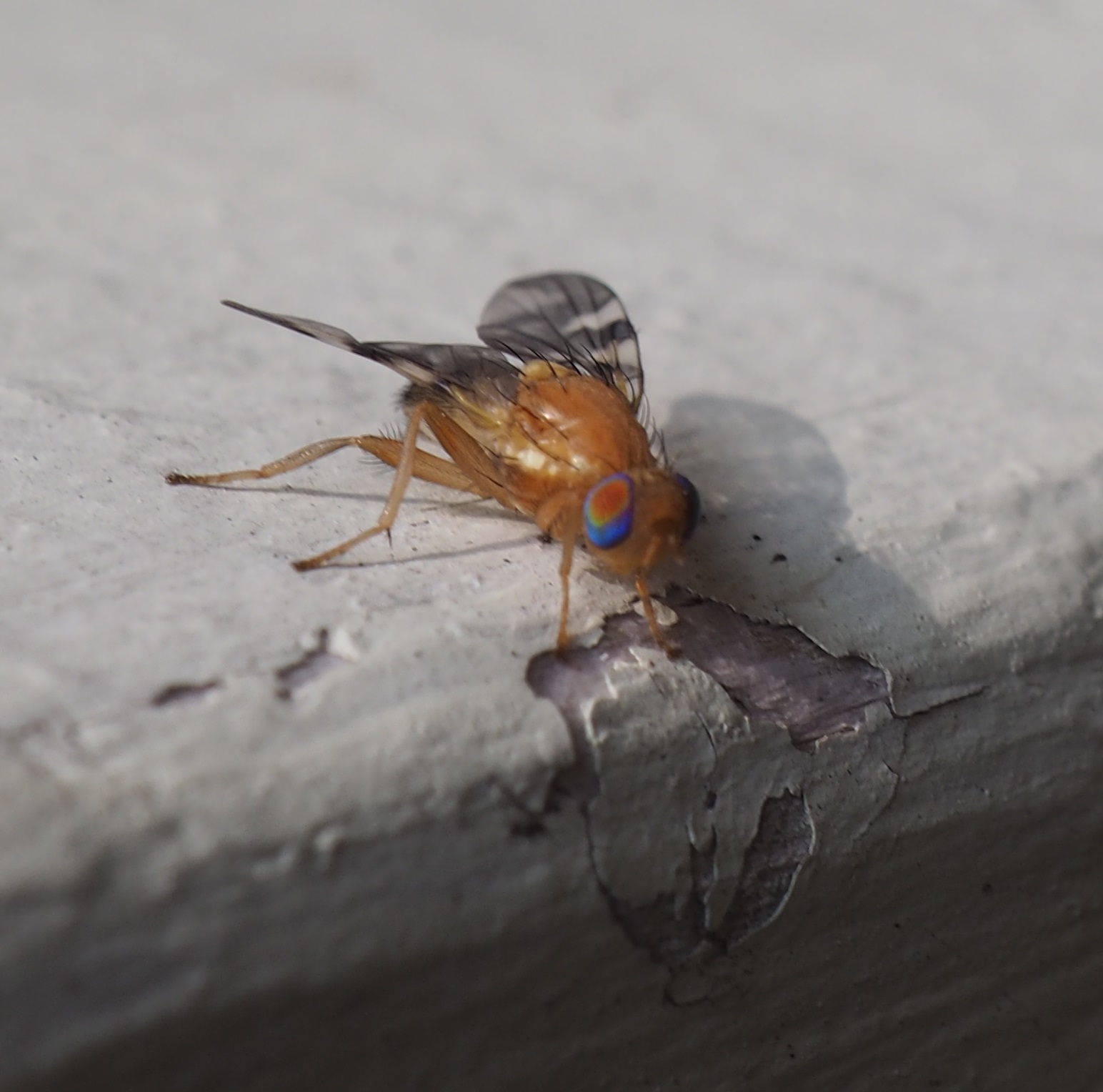
Let's just check out a couple more pretty flies. Seems that's all we have left! :-)
first one more of the long-legged flies that glows in the sun. Then the most common fly in the genus Rhagoletis around here - the Root-Maggot Fly, and then yet another long-legged fly in shades of yellow!
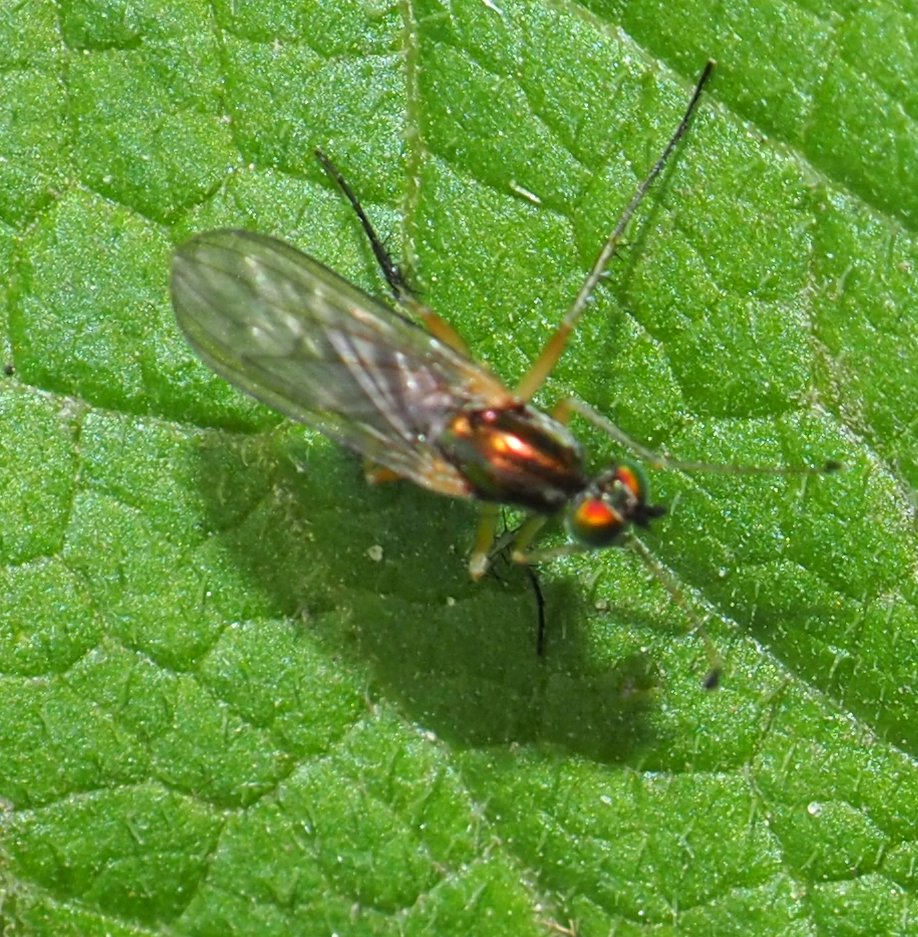
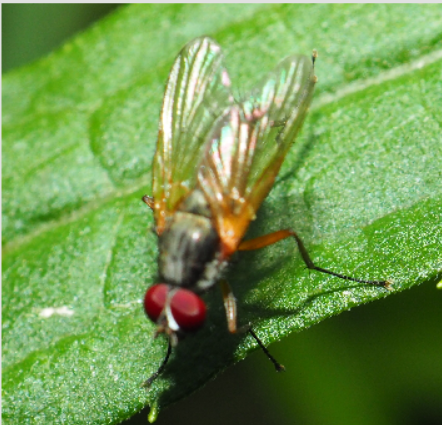
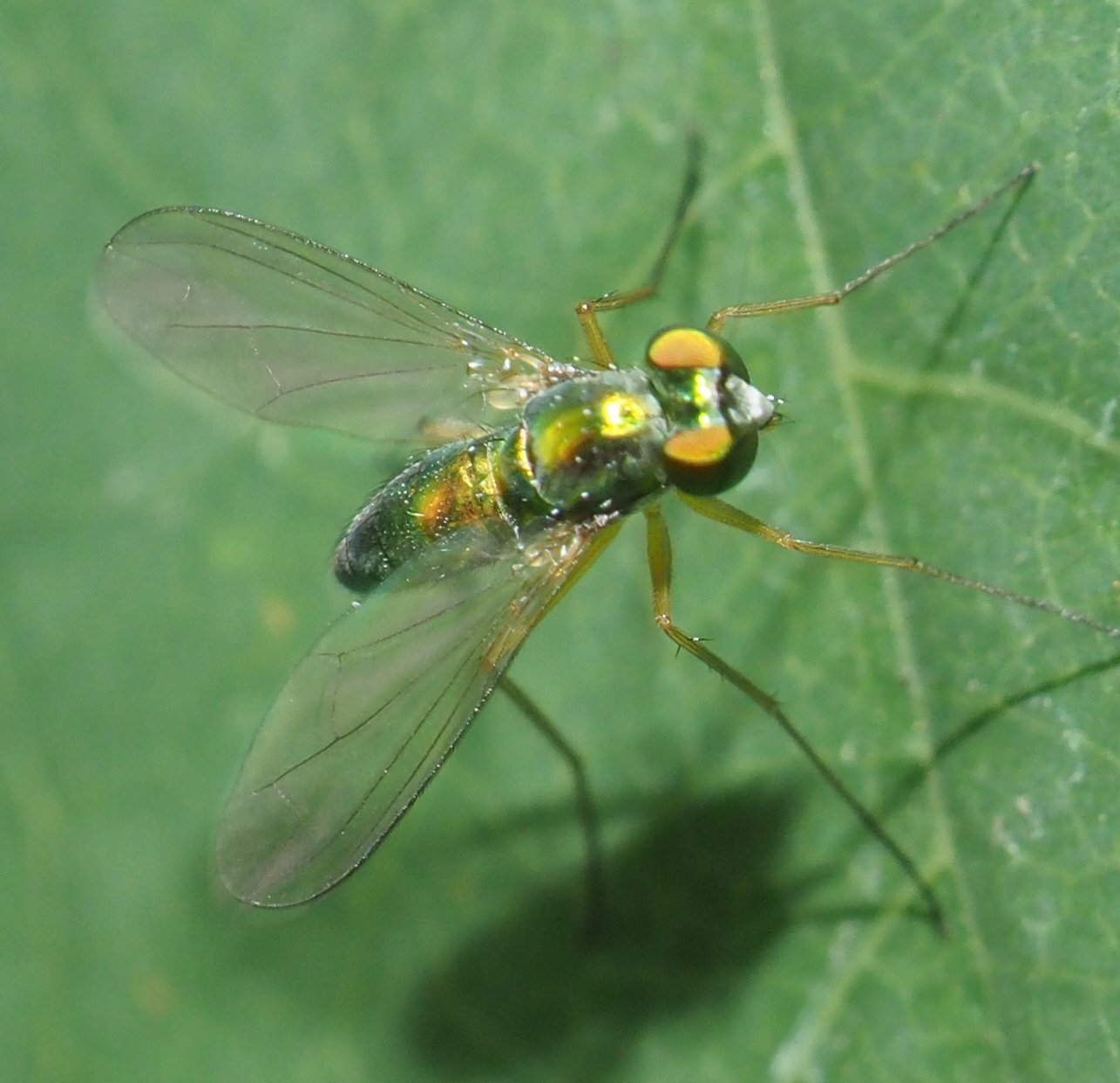
And now we've raced through the flies to reach the harvestmen.
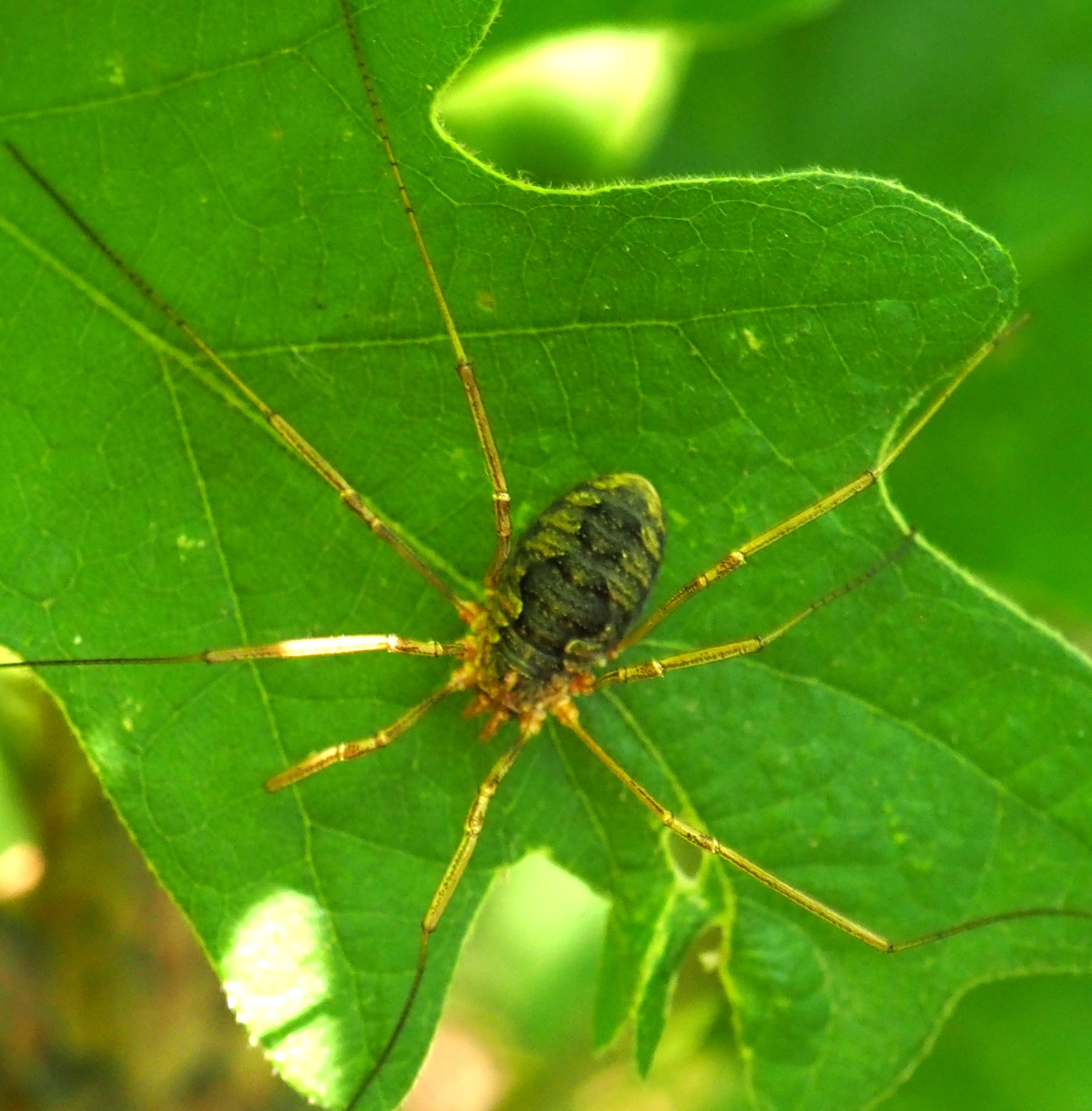

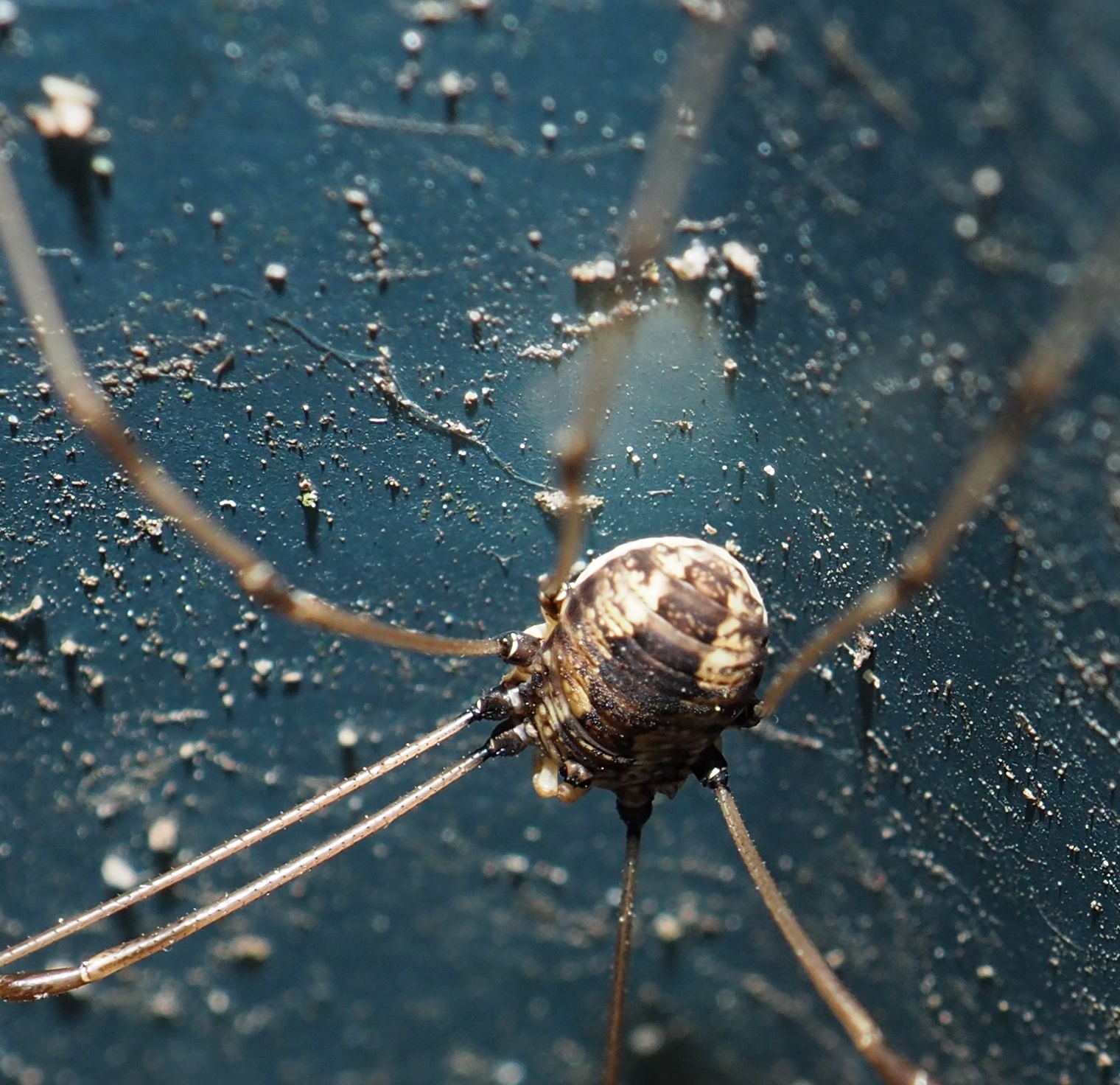
This first one is one of the Cellar Spiders. Second is a Harvestman. But the last one - is it actually alive? I think a Spider found him first.
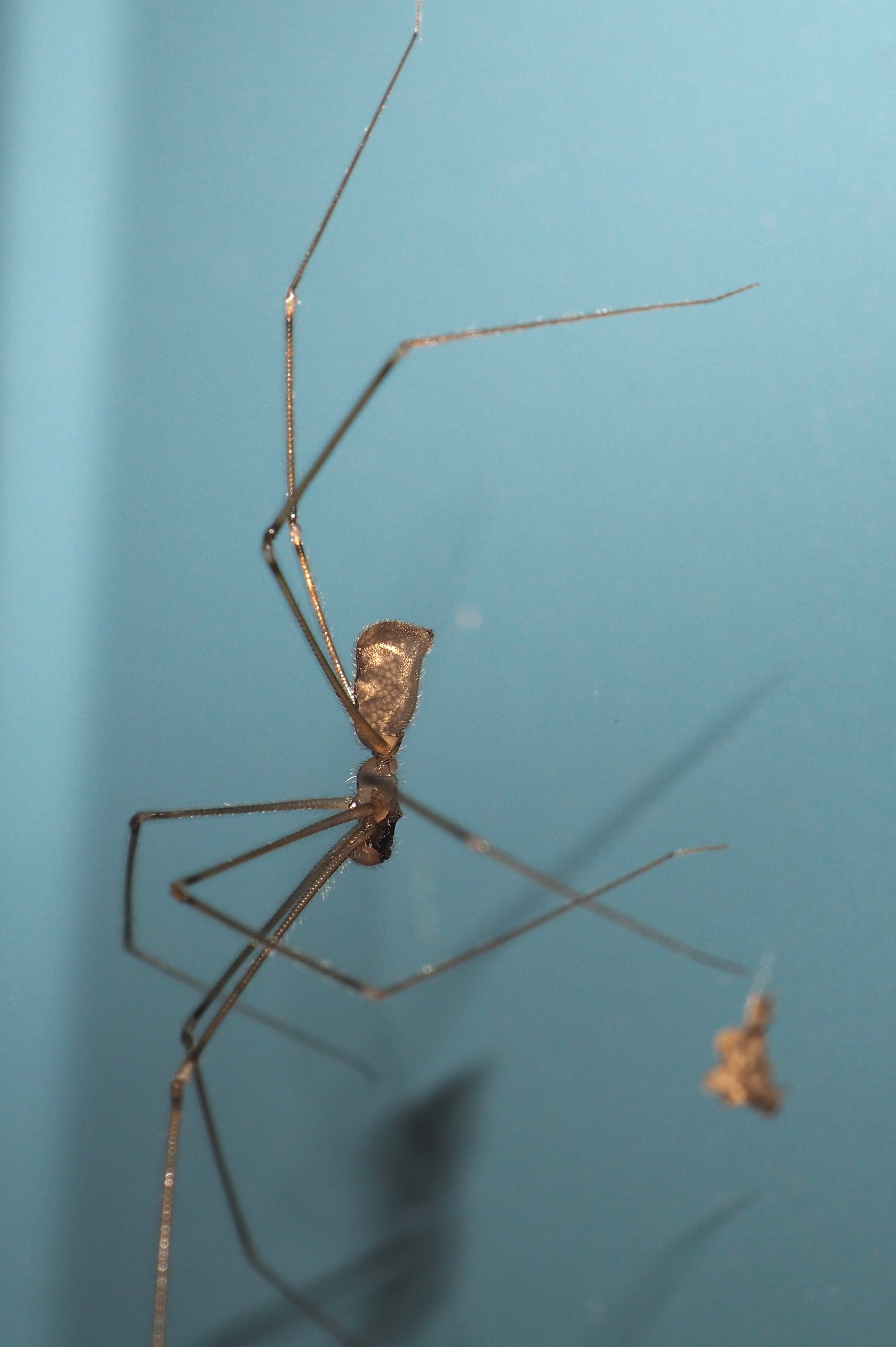
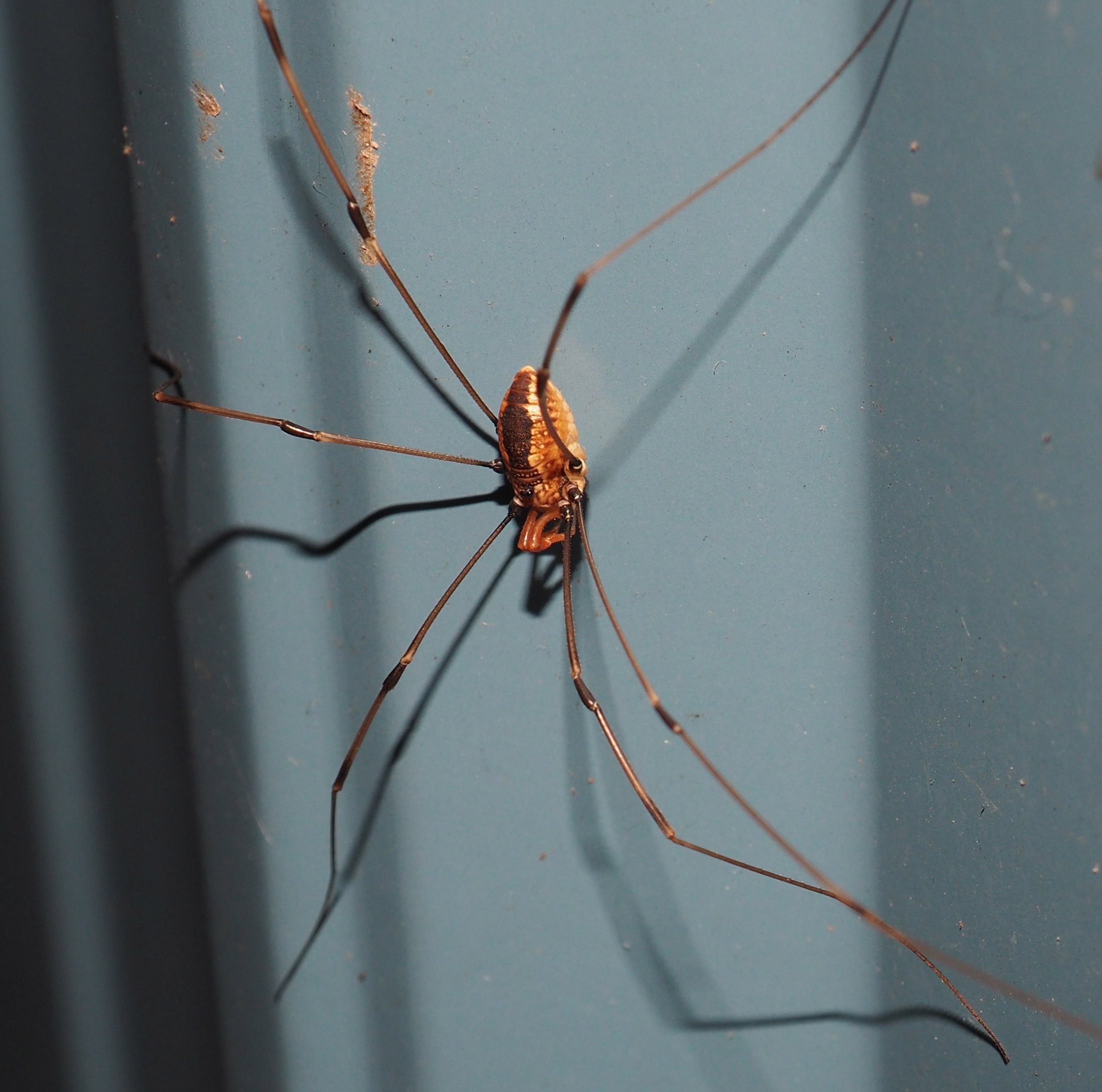
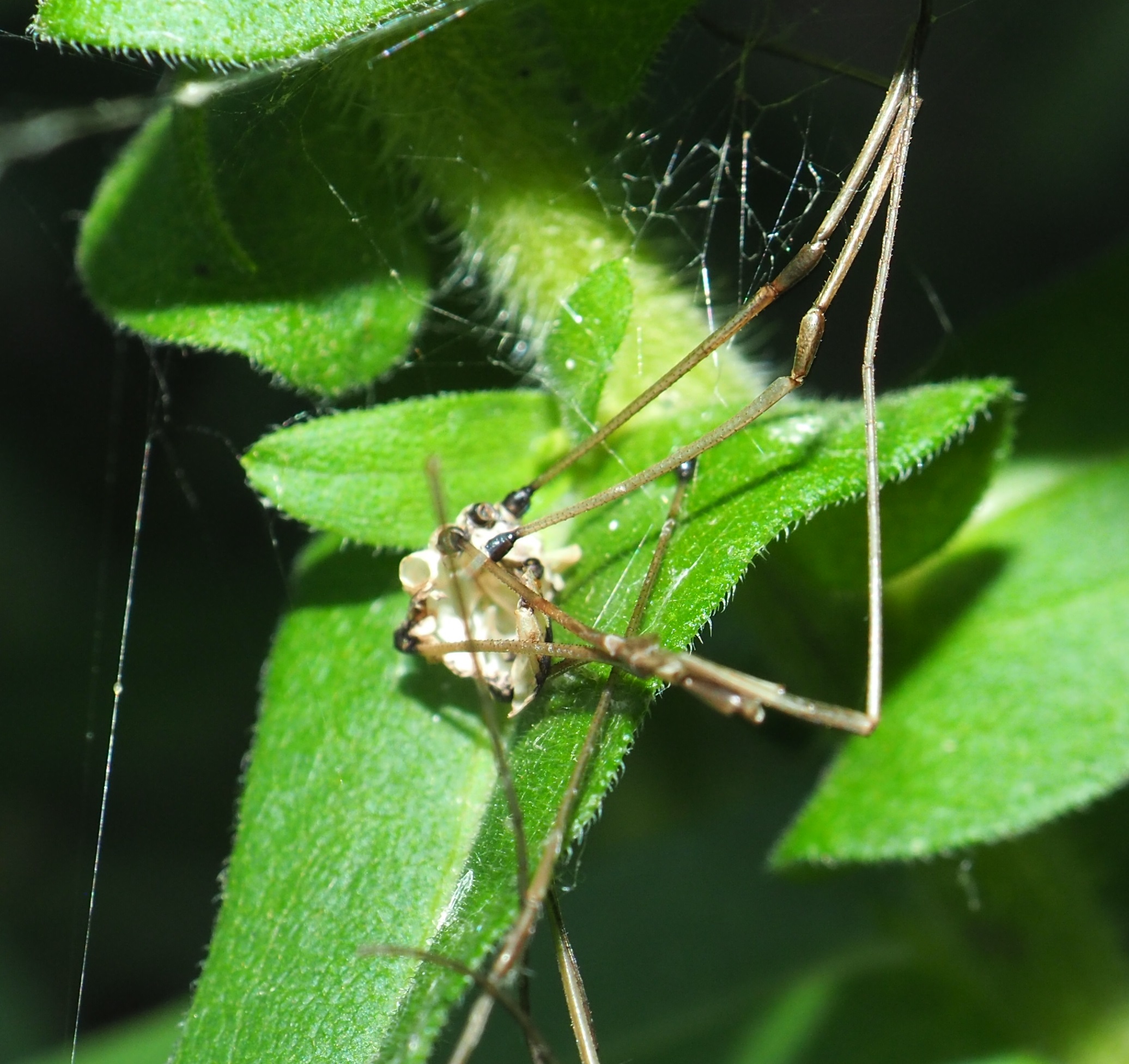
Here are a few stand-alones. First may or may not be a caterpillar, but it is a long skinny thingy. The mayfly is very small but lovely colors. Last is of course a portrait of the baby monarchs which made their chrysalids before I gave them back to their mommy, my neighbor.
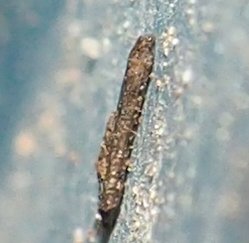
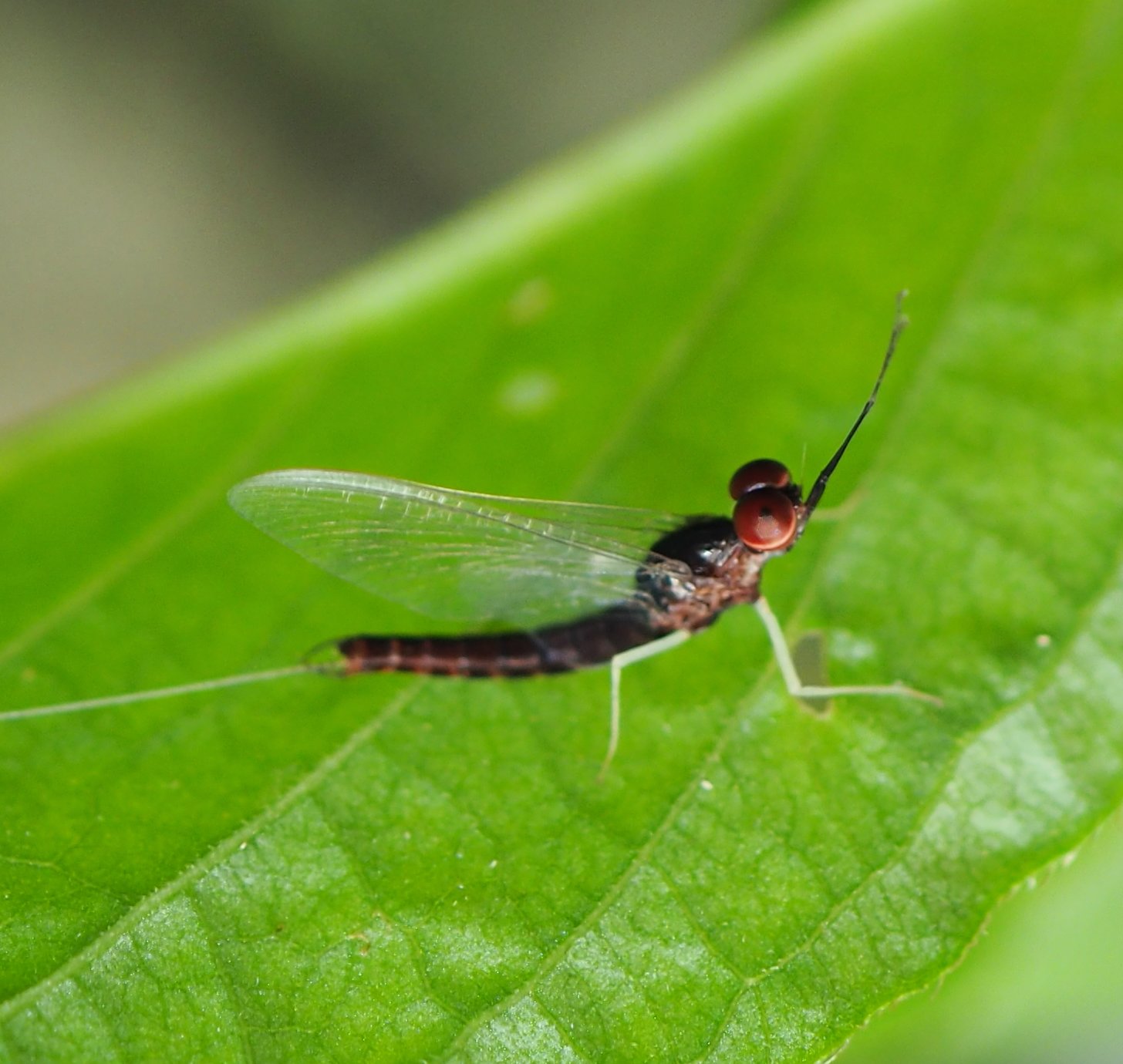
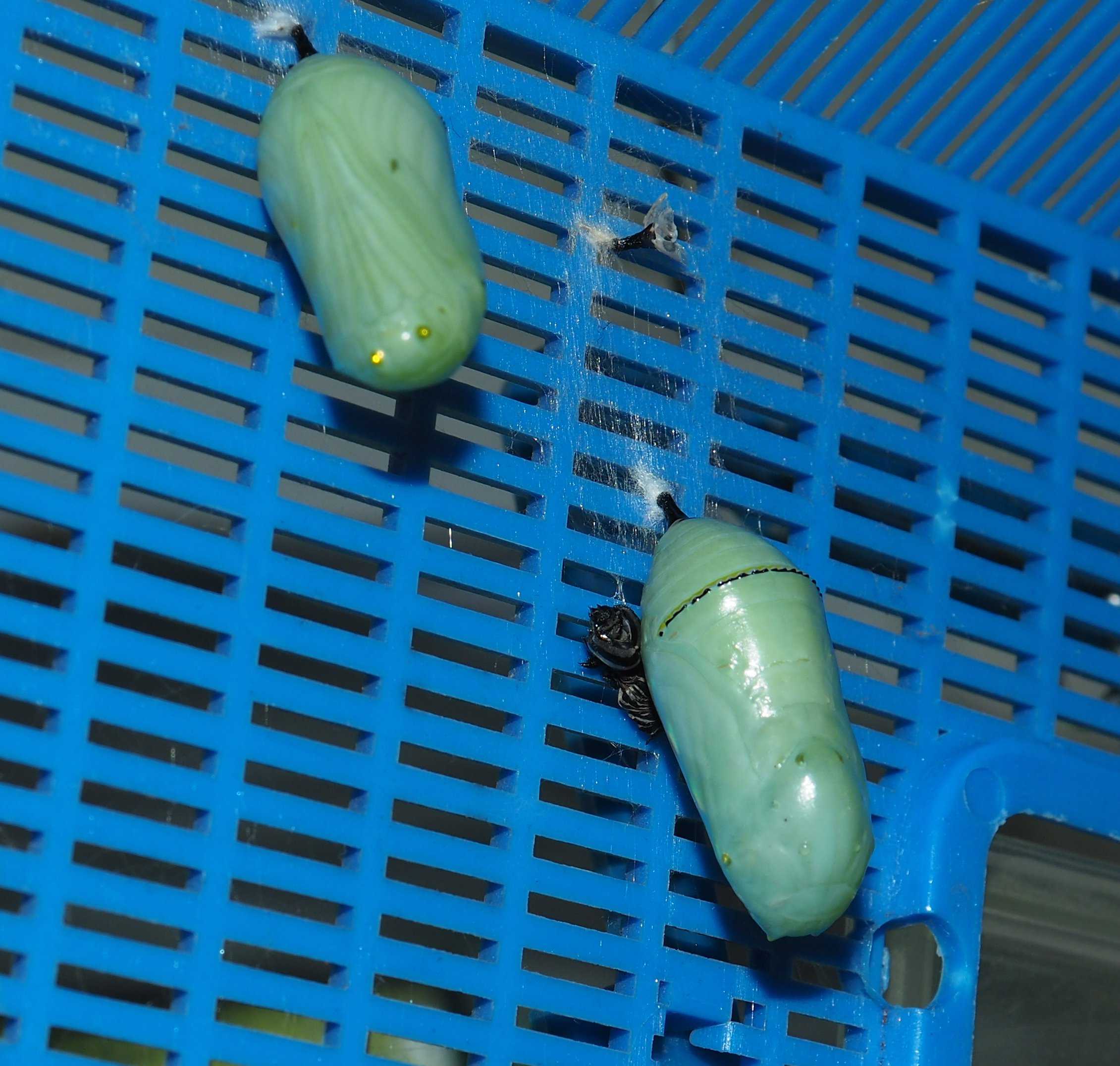
We now enter into the World O' Spiders. First is a young Common House Spider. Then another CHS whose legs seem to make a polygonal shape to the abdomen. Then a clownish face on one of the Cellar Spiders. How refreshing to have the "face" appear on the actual back of the head, instead on the back of the abdomen, the usual place for the "face". The last image is of a small Crab Spider wrapping its arms across an aster's leaf.
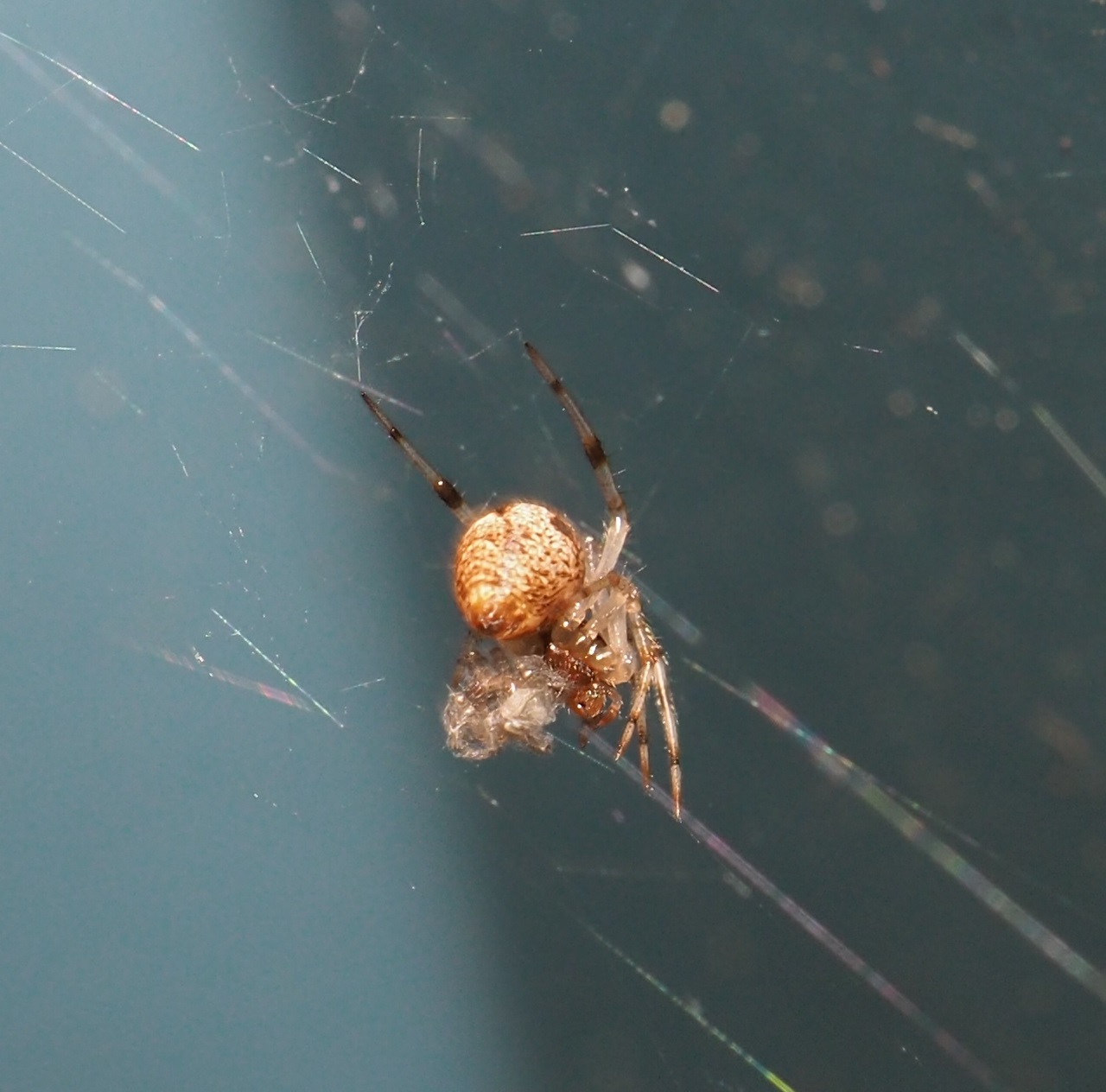


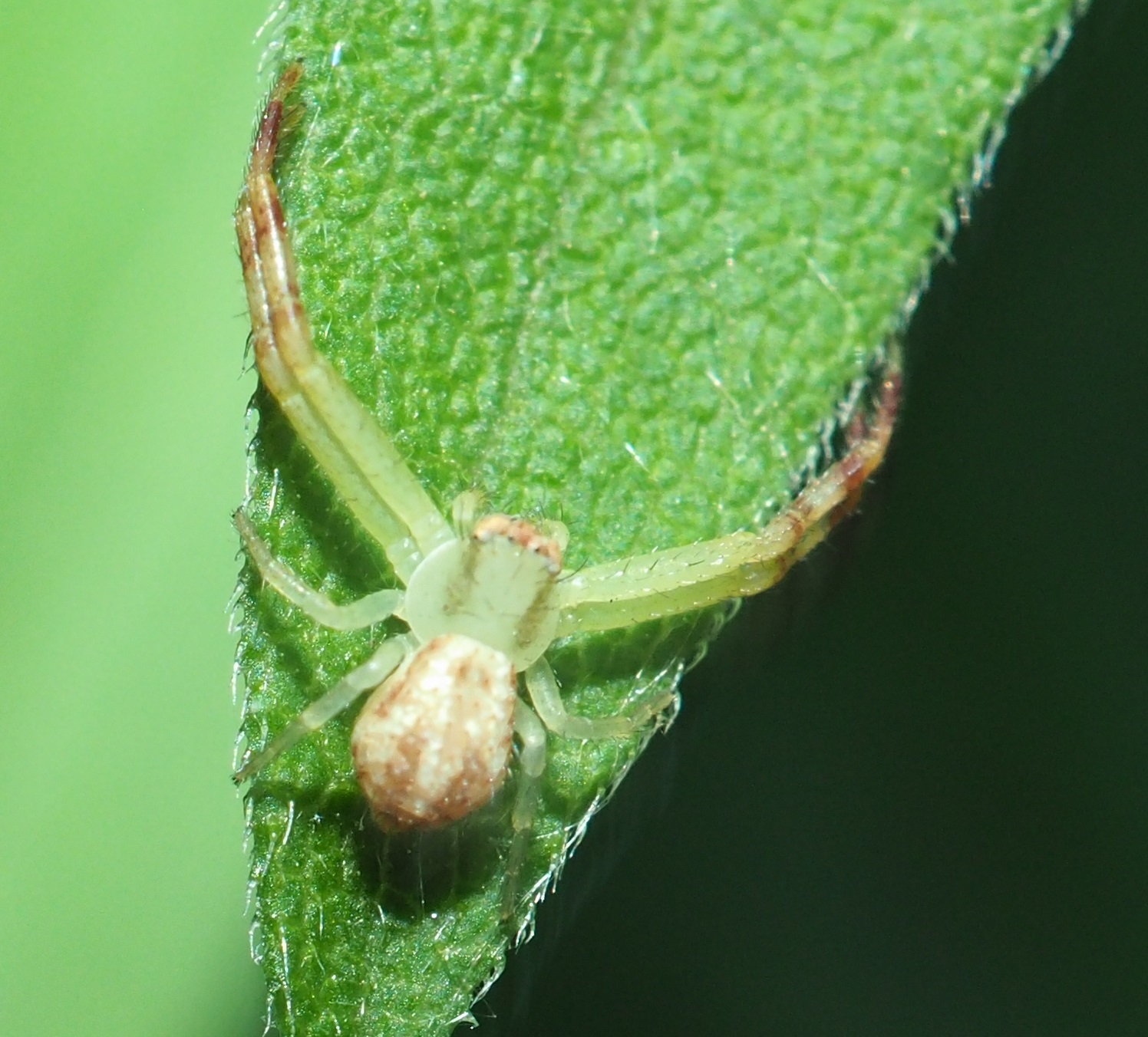
We're now starting to see the Grass spiders - they make sheet-web nests convenient for them to run out to catch prey when it hits the nest. I hope this next one makes you laugh as it did me. This is a jumping spider - I often say it's my favorite spider (next to the Pirate Spiders). In fact it's a very old friend, Naphrys pulex. But with it in this pose, jumping down towards us,the face is on the head of the actual spider but looks like the face of a tiny squirrel or hamster. Its abdomen is just like a a big belly of a baby squirrel too. Isn't that sweet? Picture 3 shows the face of an N. pulex. There are the big eyes!
In the last picture, the black dots are the eyes of a good-sized spider. But which? Maybe a Ghost Spider?

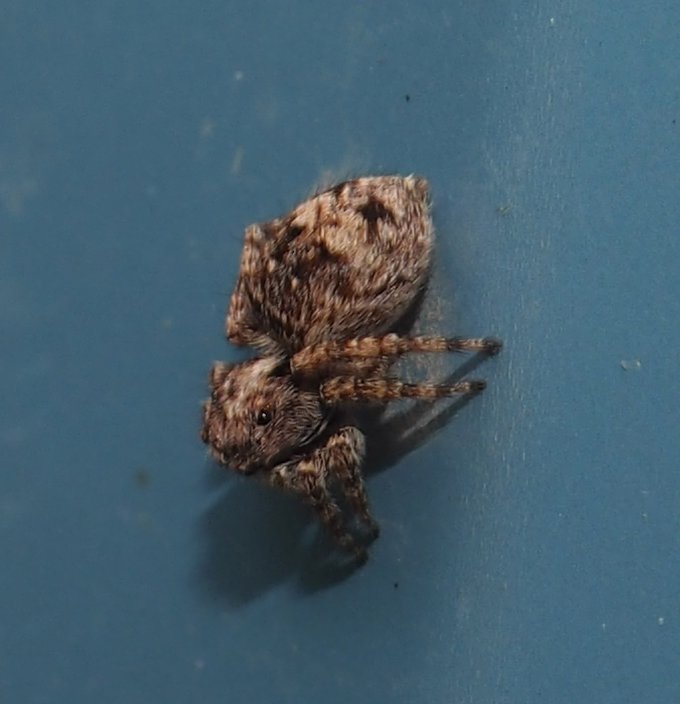
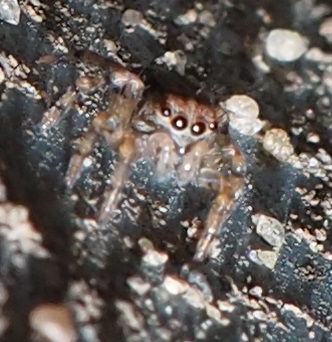
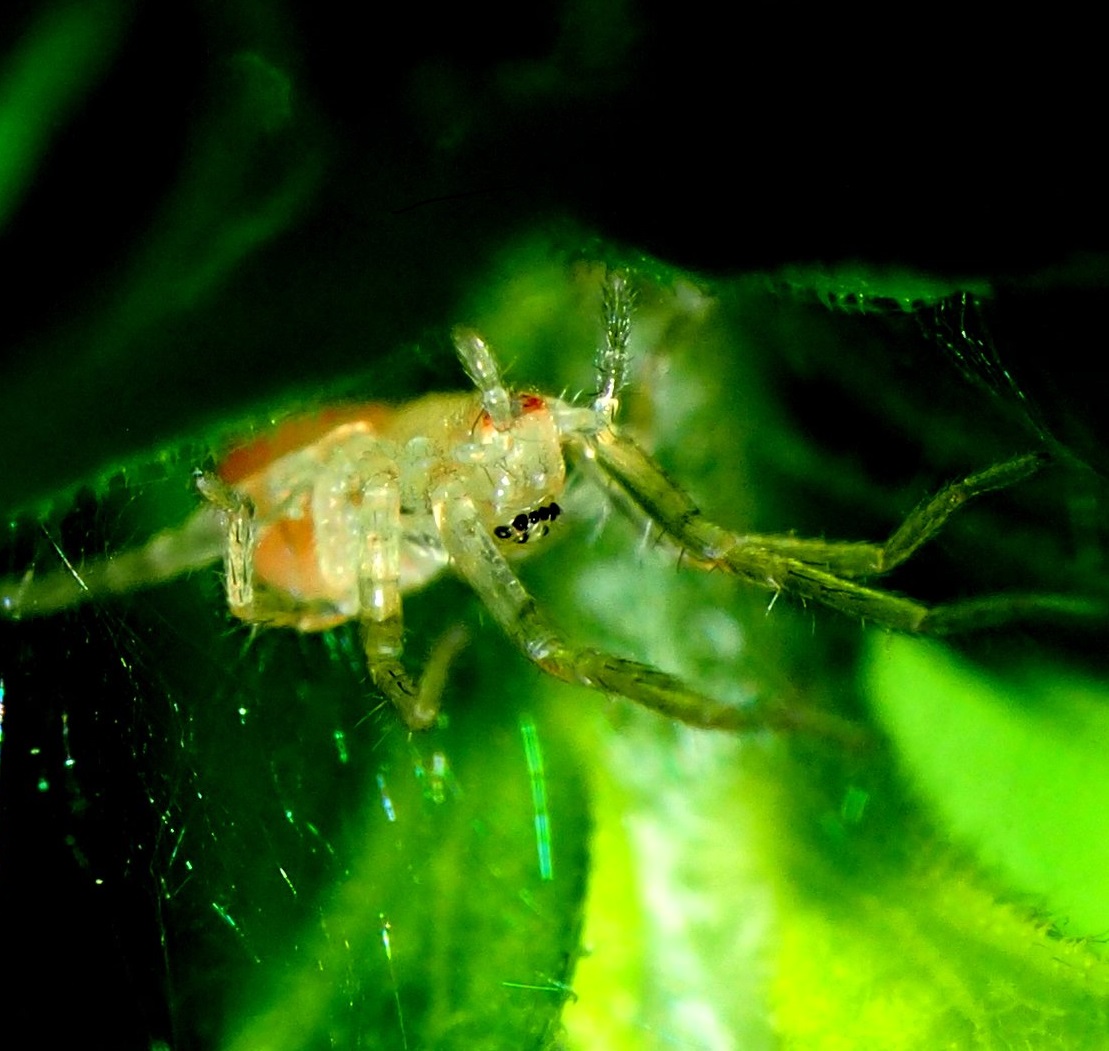
Here is an ichneumon wasp or some other similar being. It is a female ichneumon because it has a sturdy ovipositor. The last two images are of another wasp or maybe ichneumon wasp.
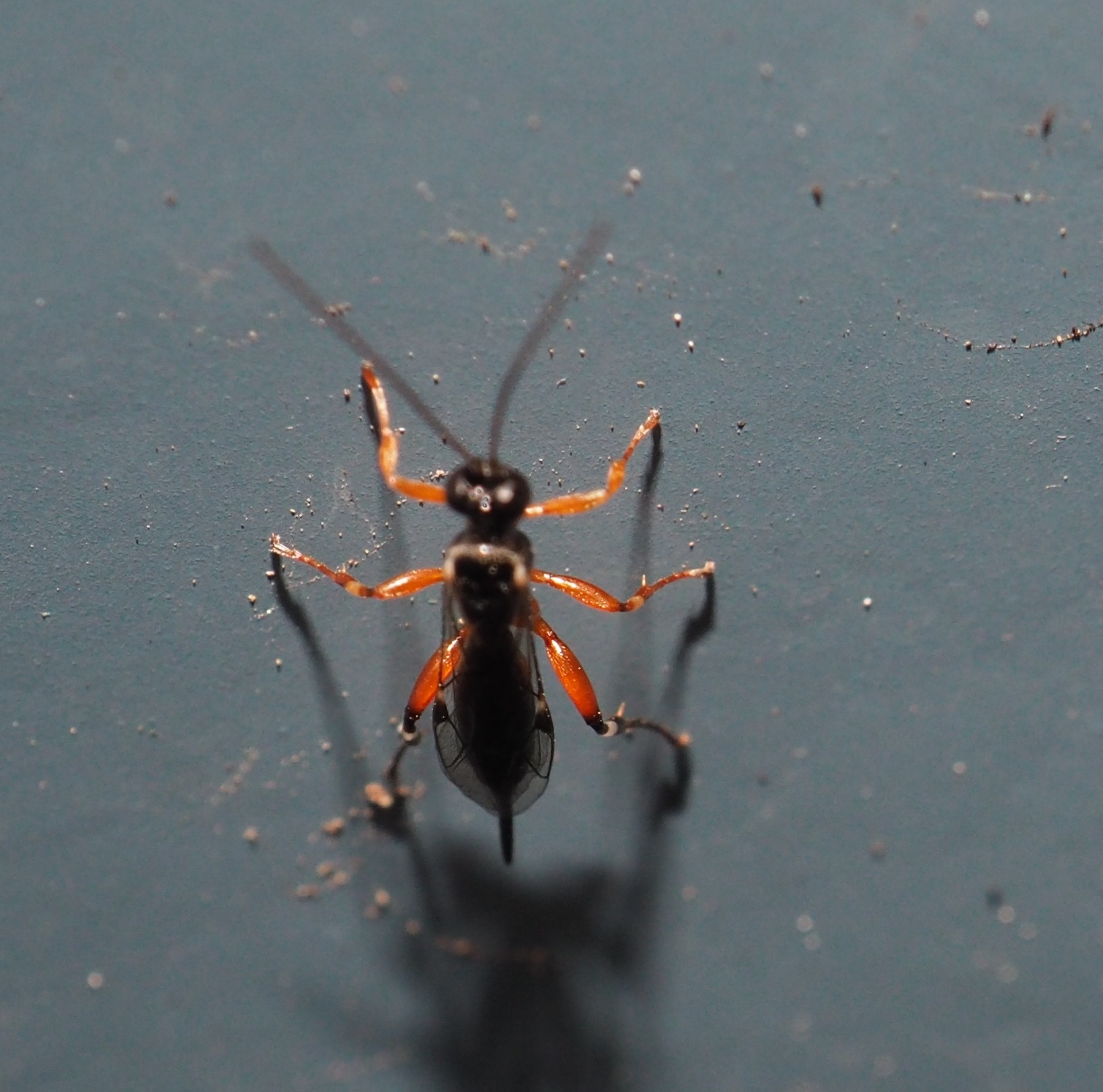
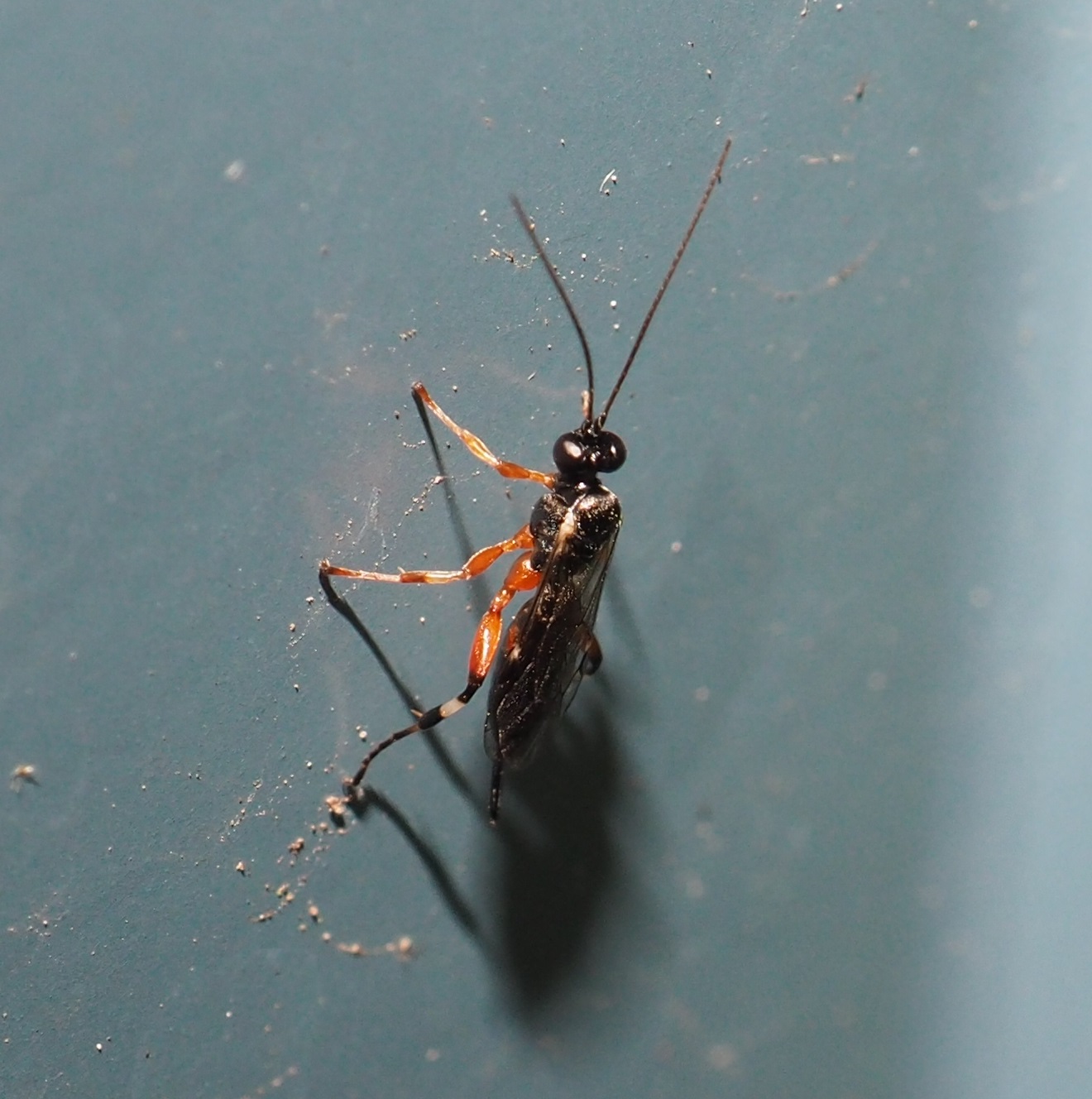
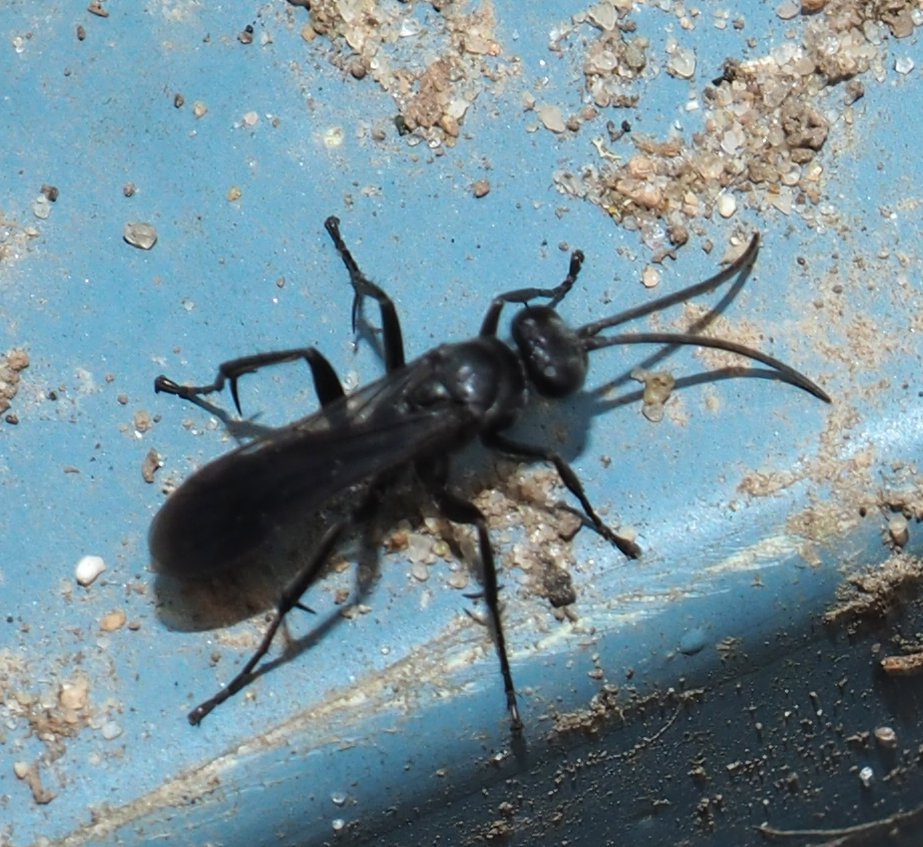

We now find ourselves at the end of our study for this week. Here we have a few more flowers. I just don't know how they learn to strike just the right pose - winsome little sweeties.
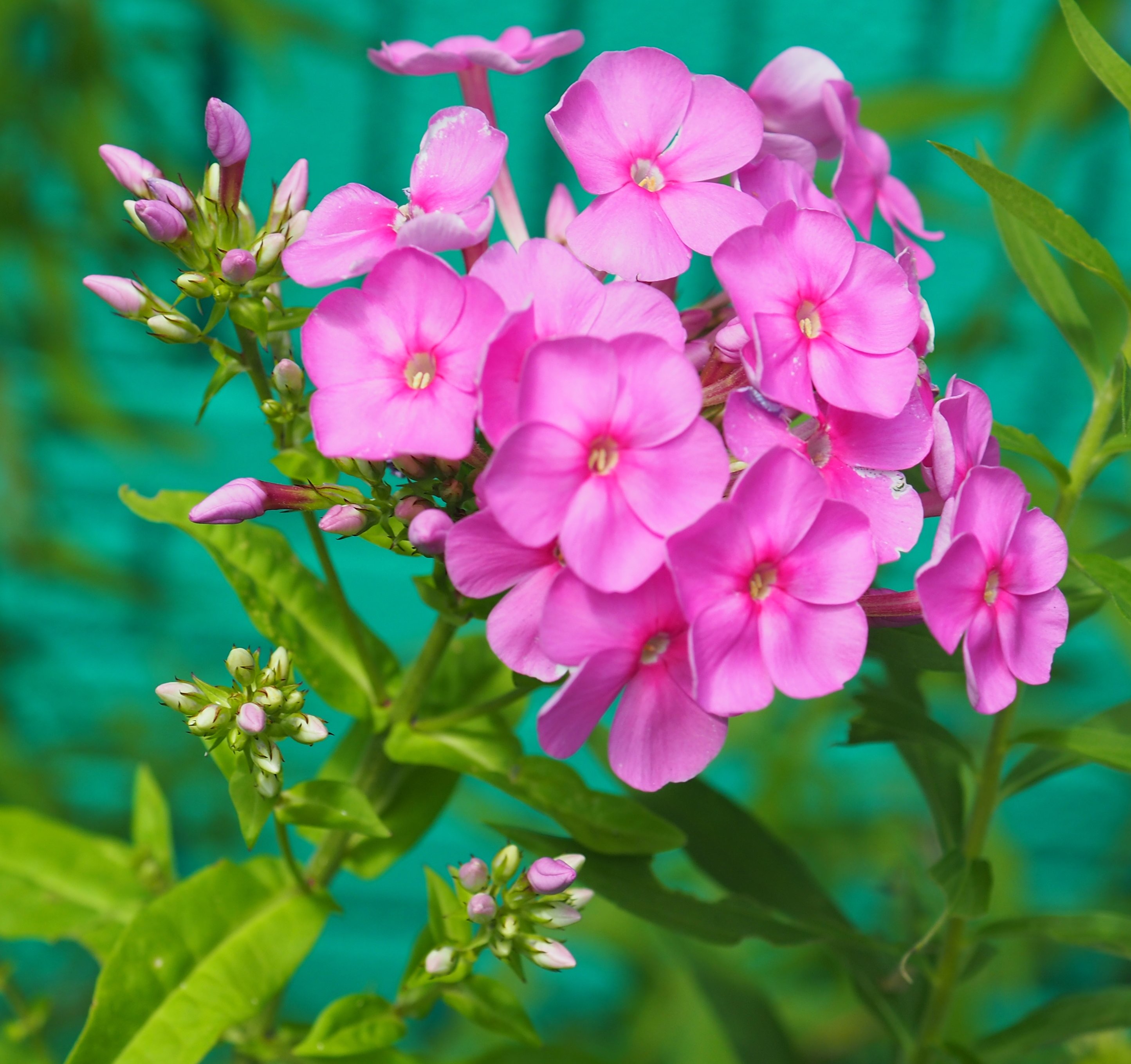
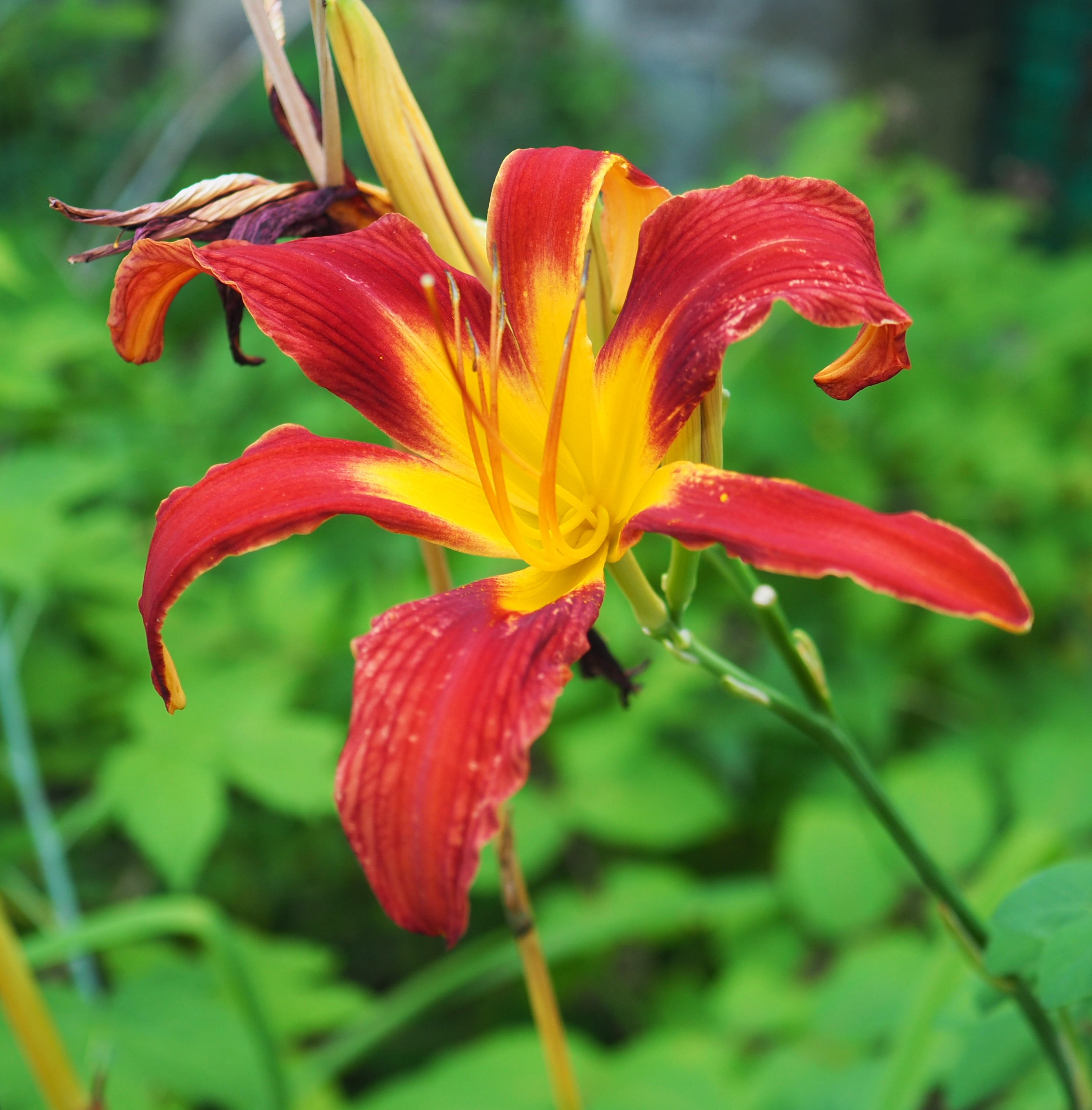

Here is one decent picture of the recovering pond with the first greenish lily of the season. The fish seem hungry - that's always a good sign. Now they know that if I come and stand overlooking the pond they can swim toward me and get a good handout. The second picture was the result of my trying to adjust the hue and saturation to improve the colors of the pink lily. I think it's a hoot.
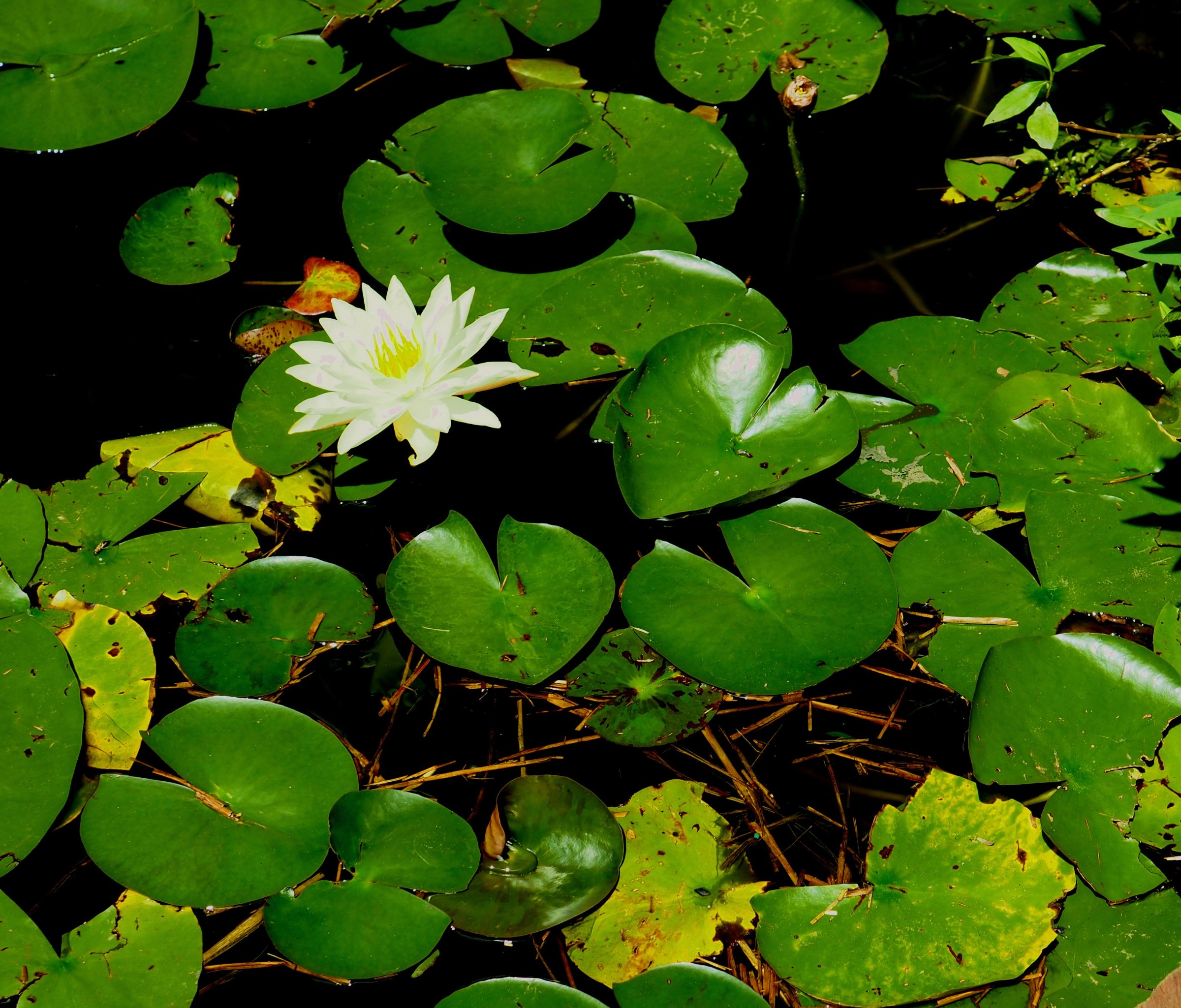

Goodbye for now, friends. Let's hope the weather is better, wherever we all are!
Love, Martha
Back to July 15, 2018
Forward to July 29, 2018
Back to main menu
copyright Martha O'Kennon 2018








































































